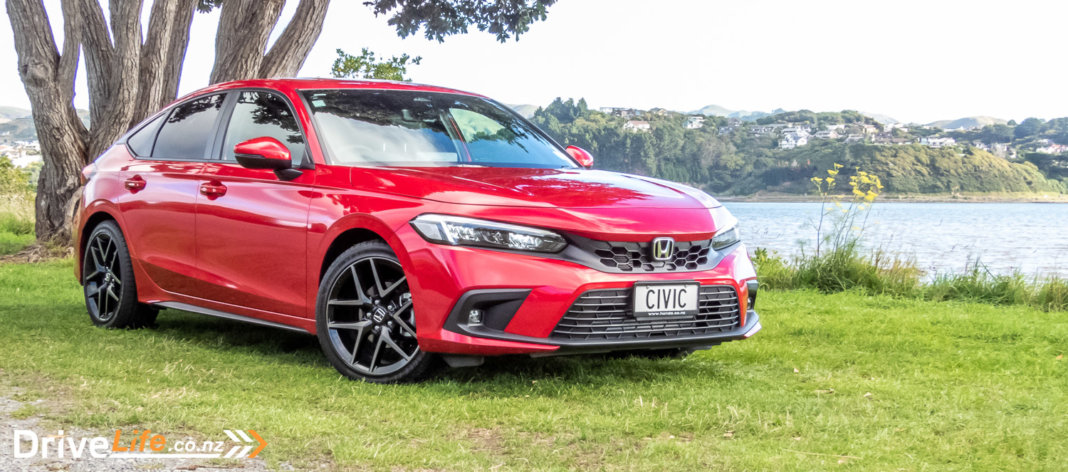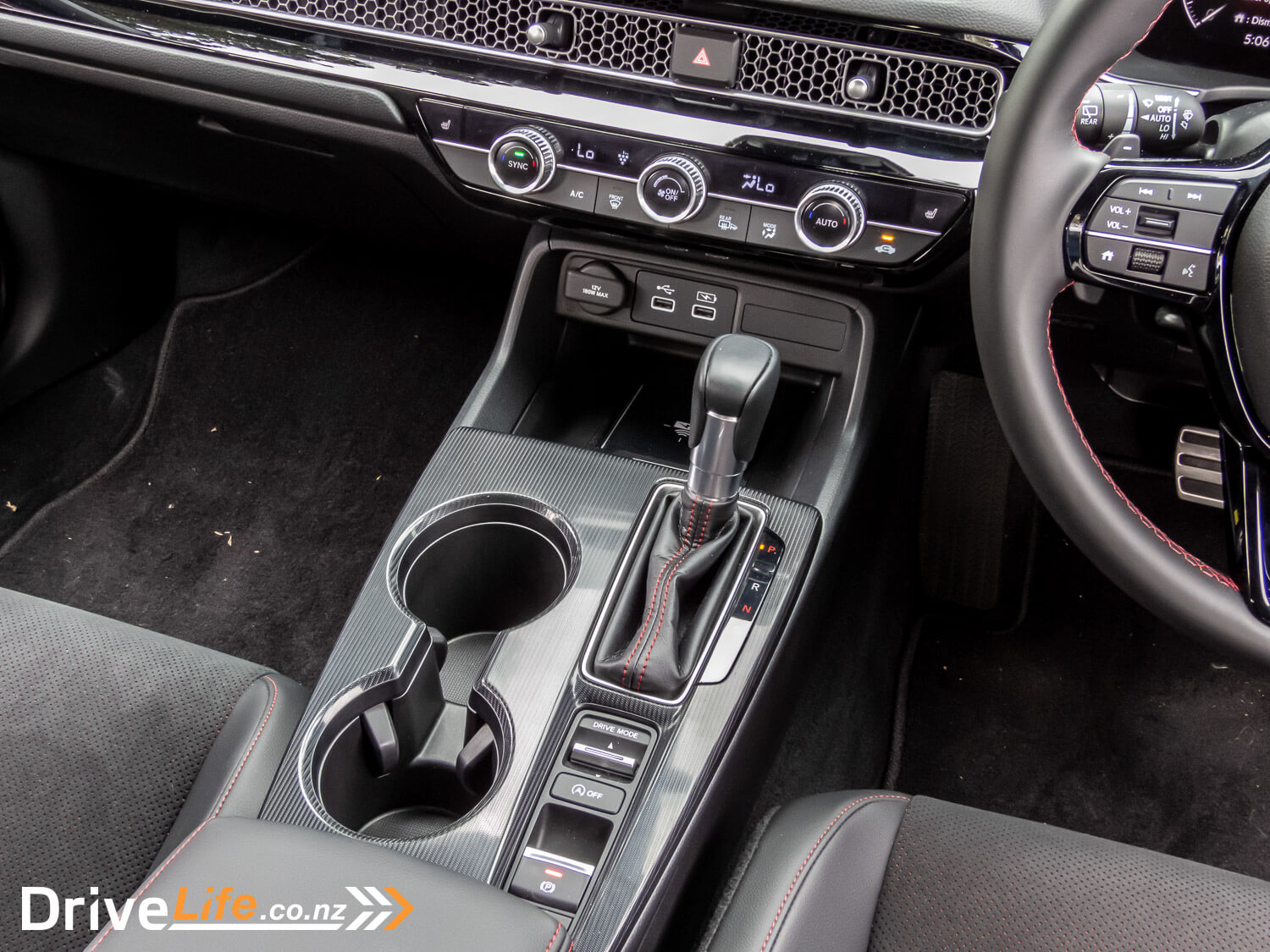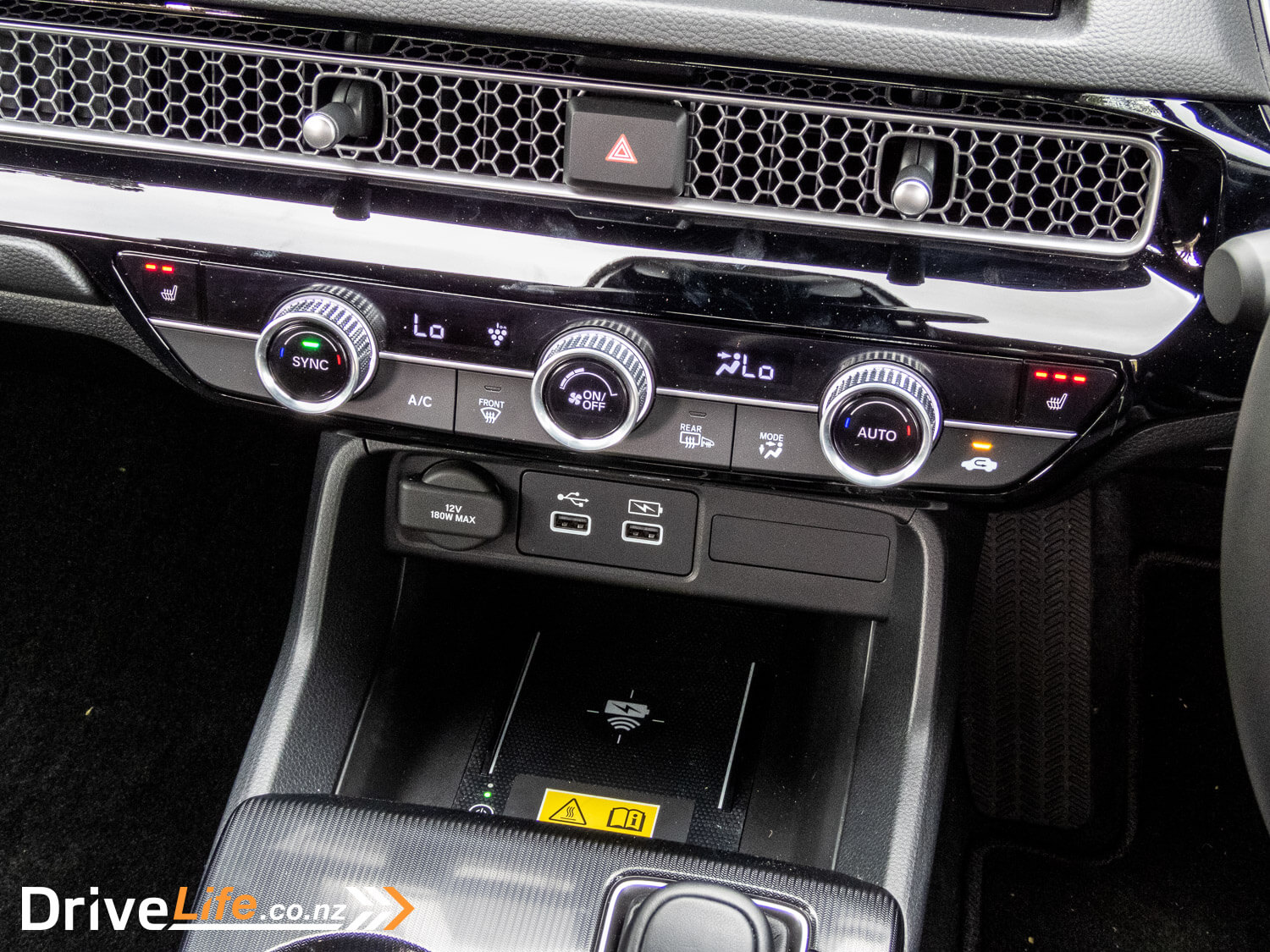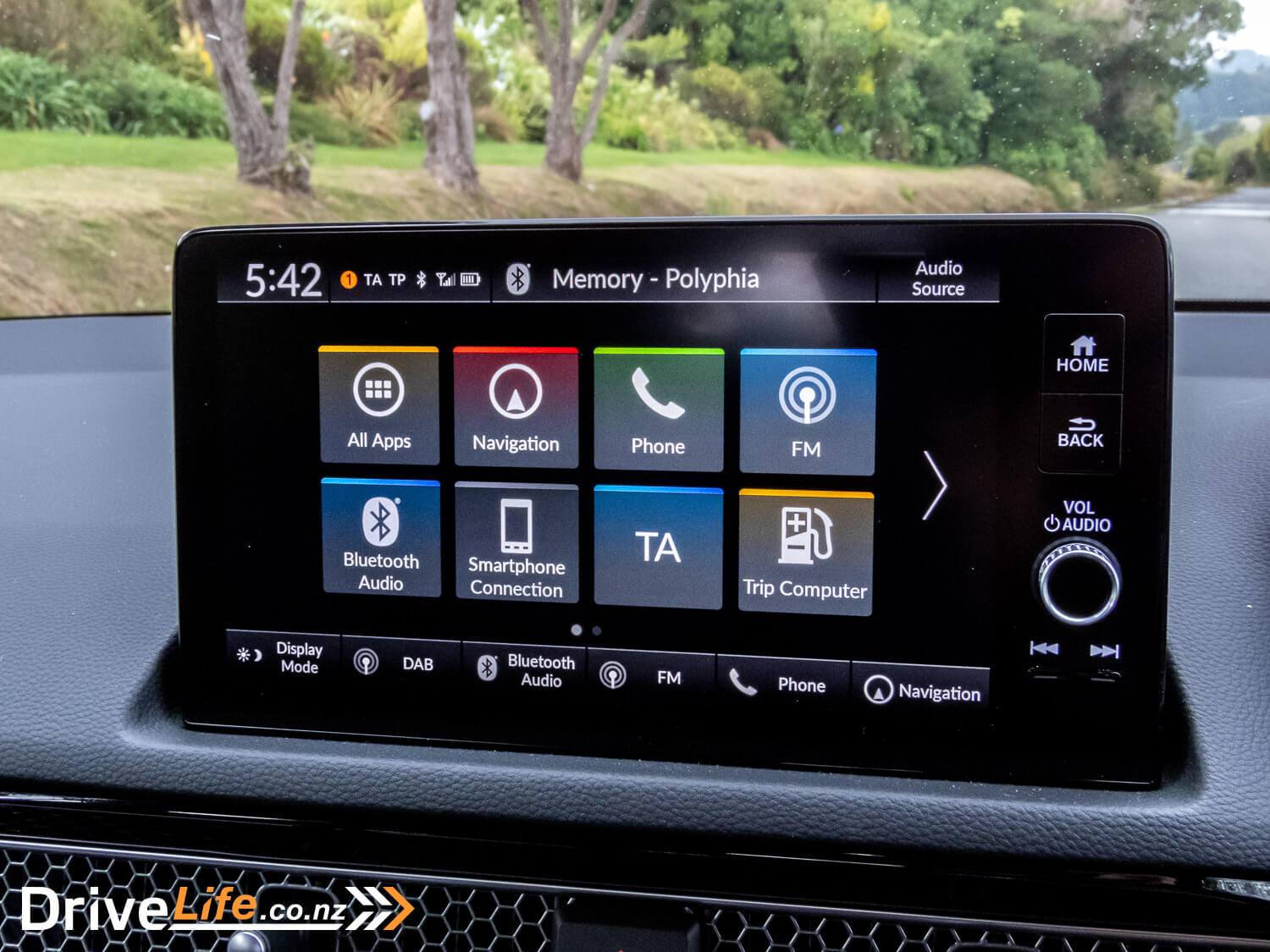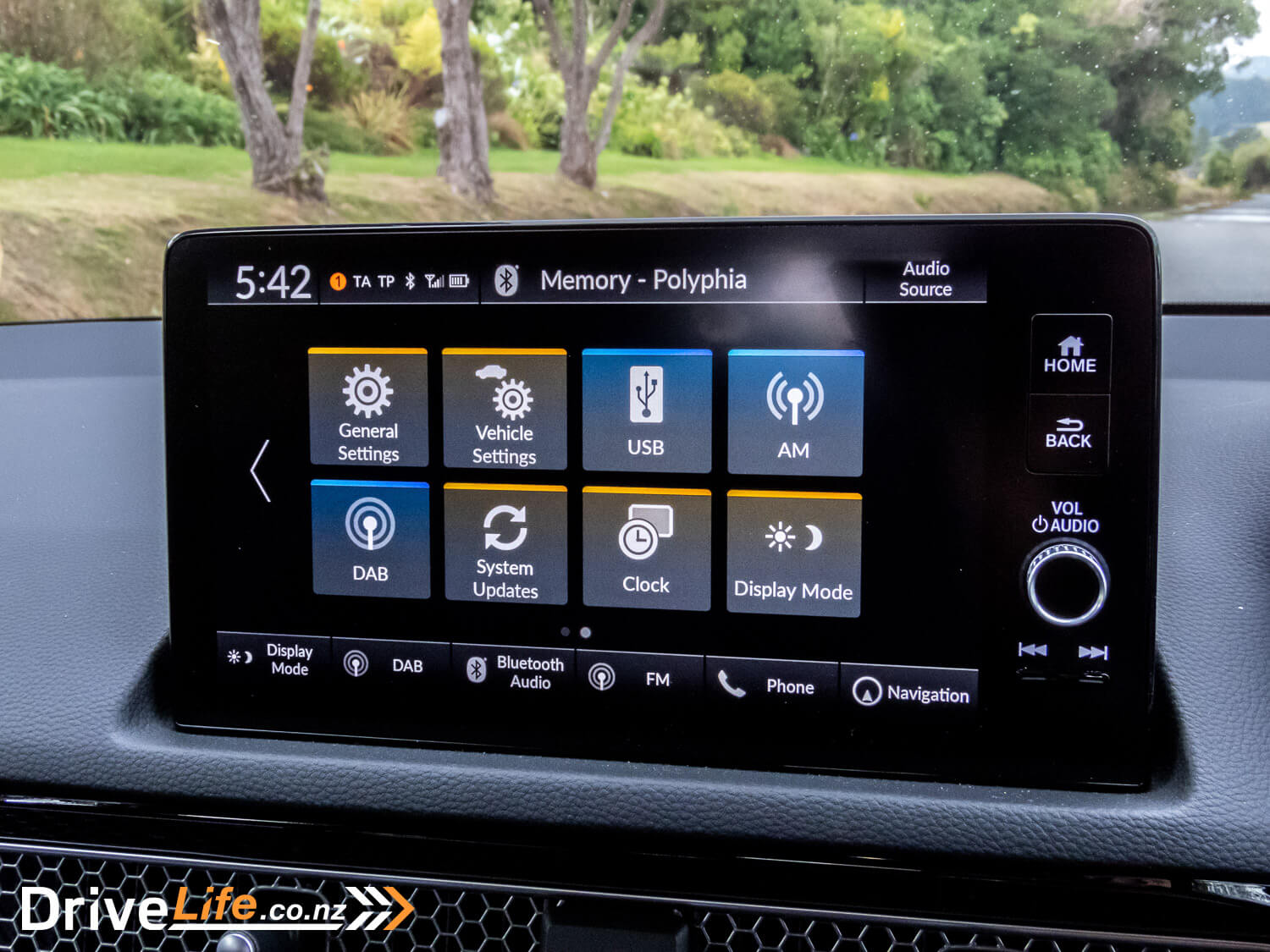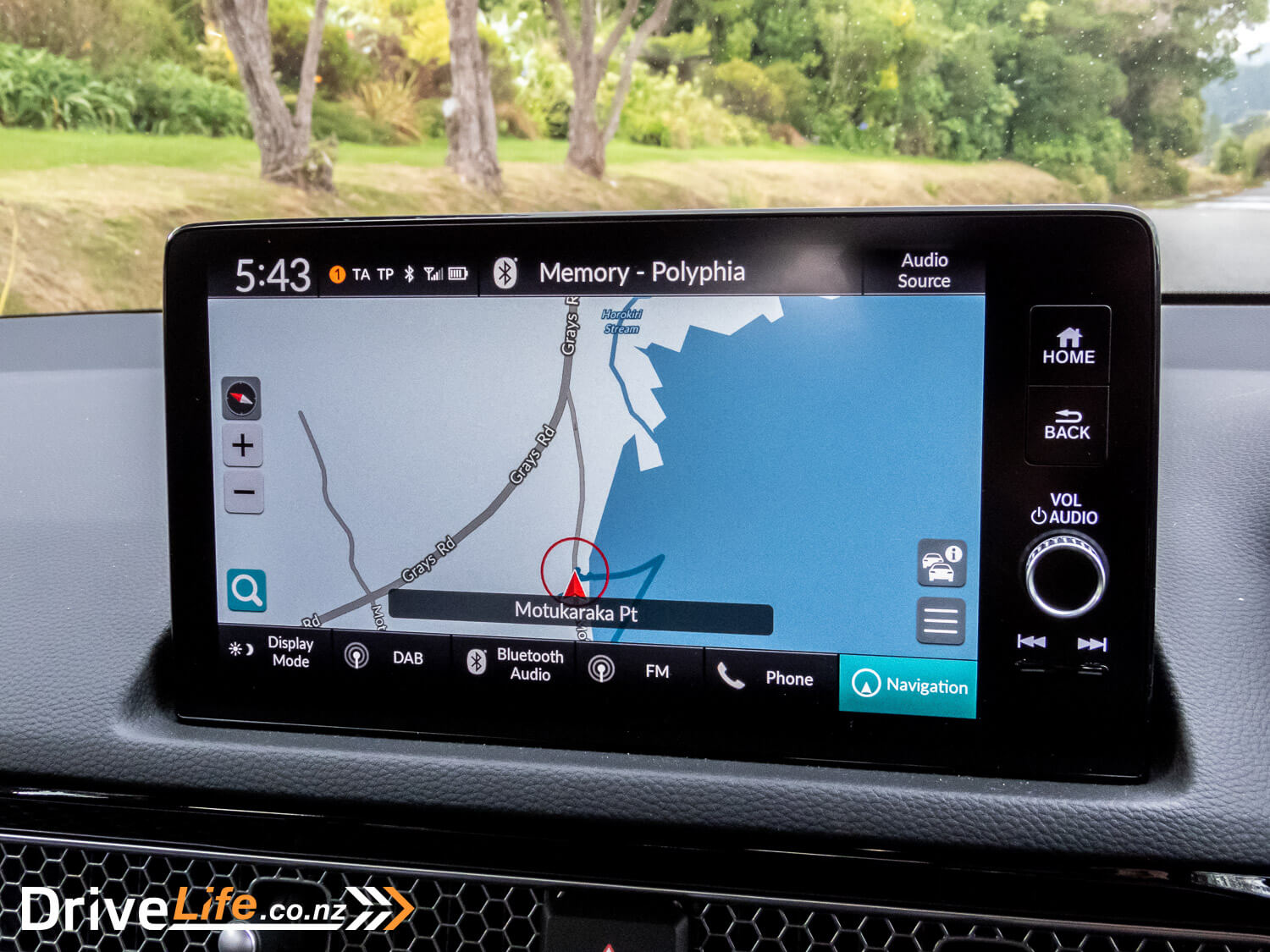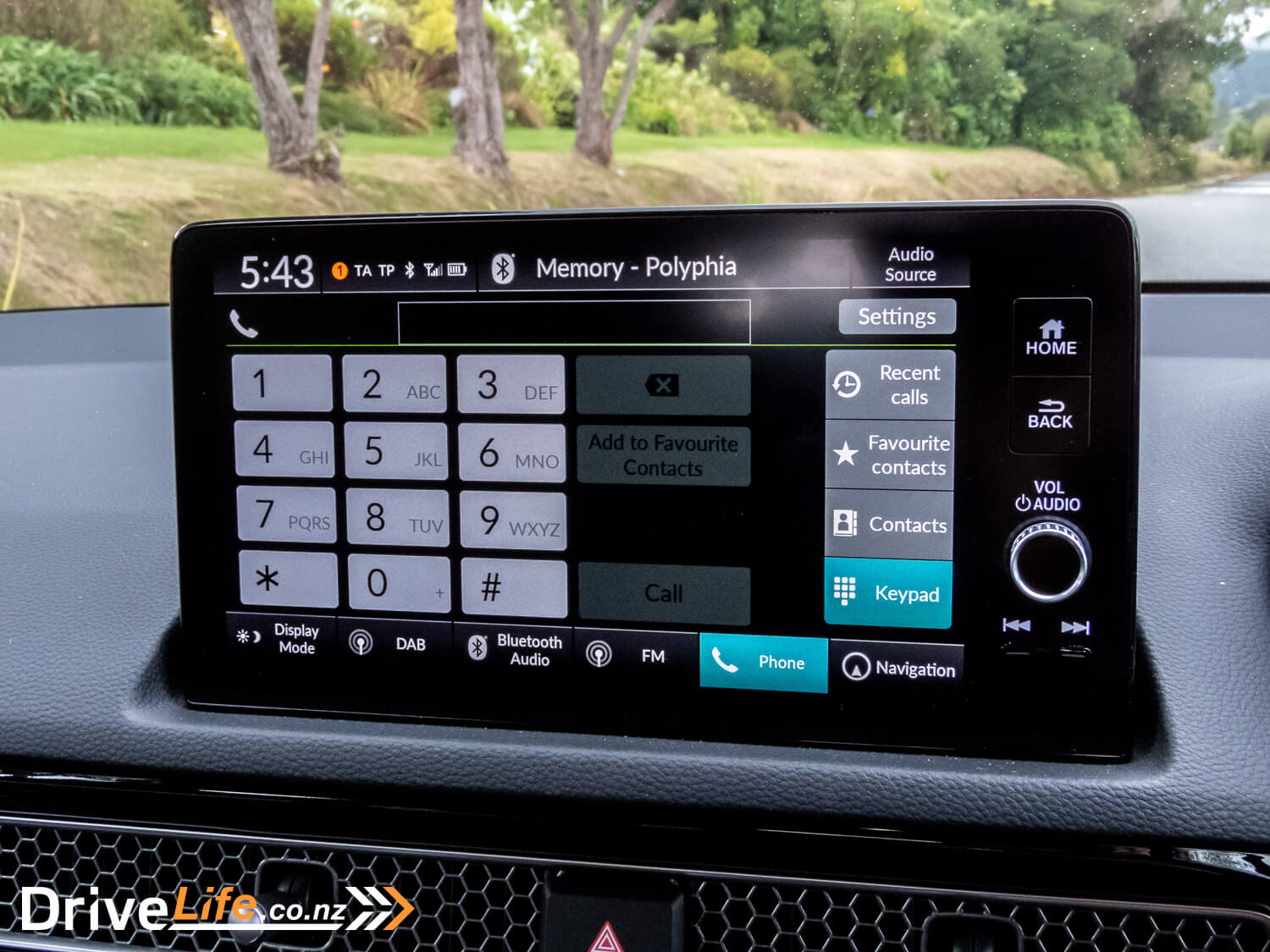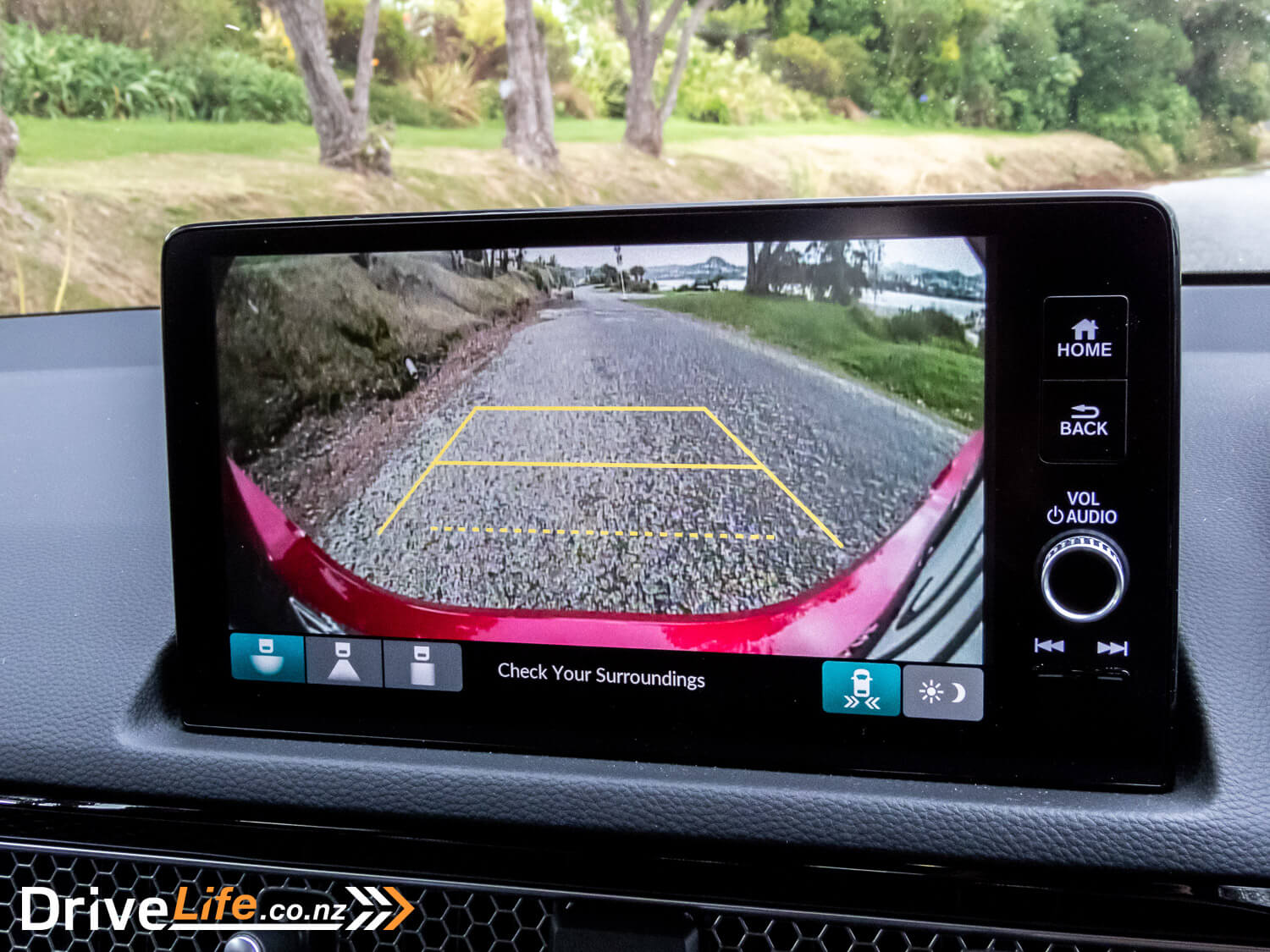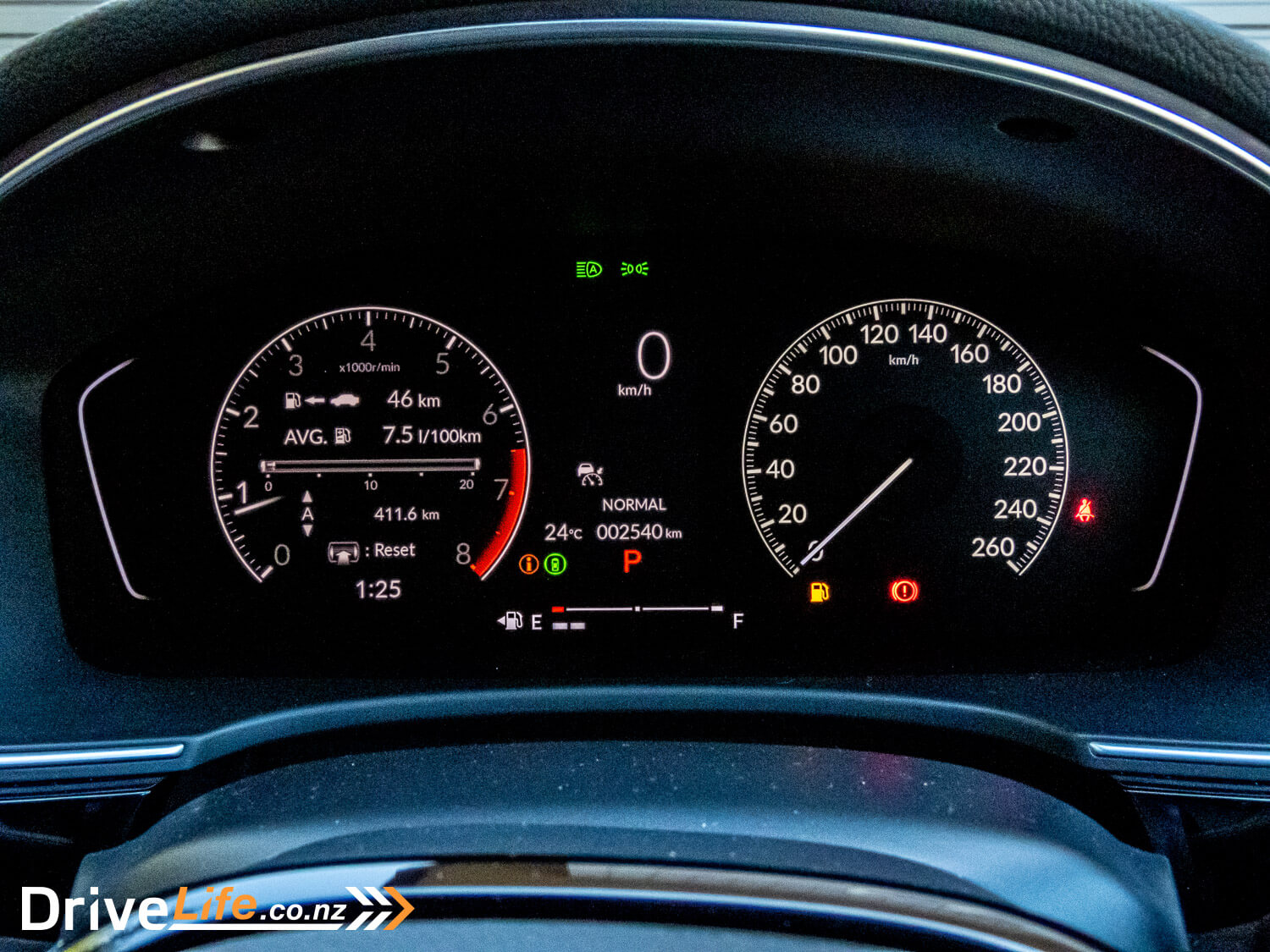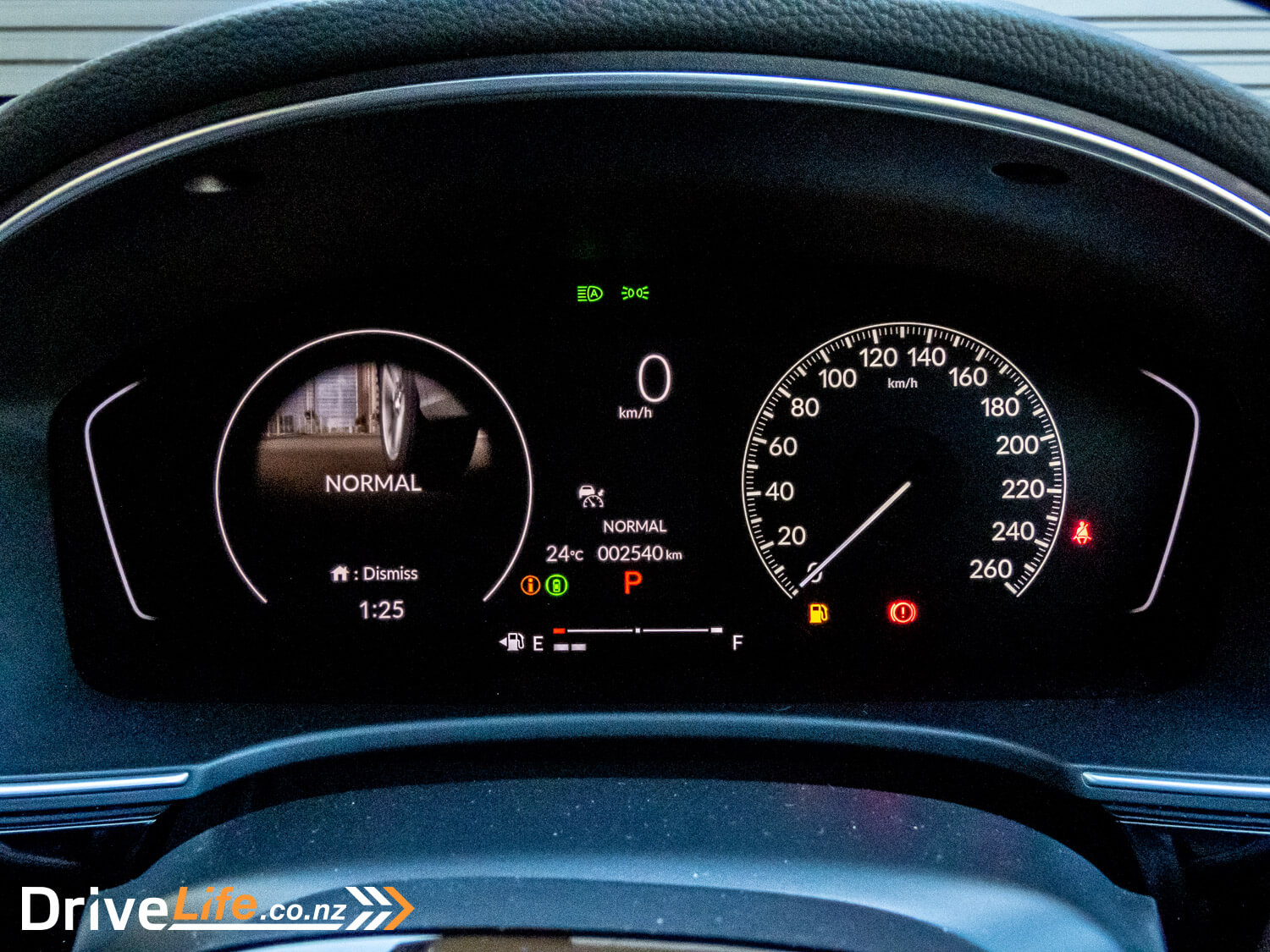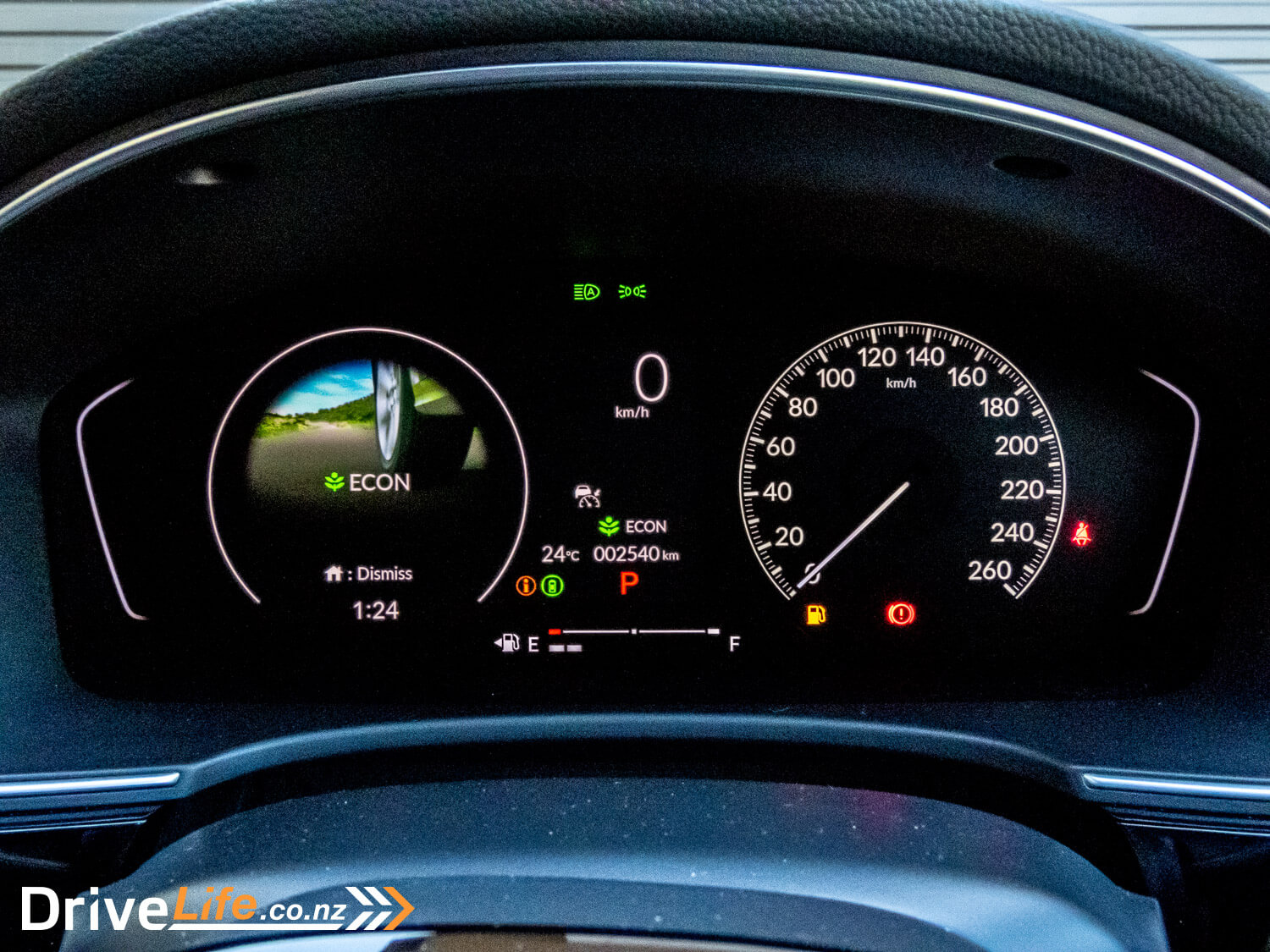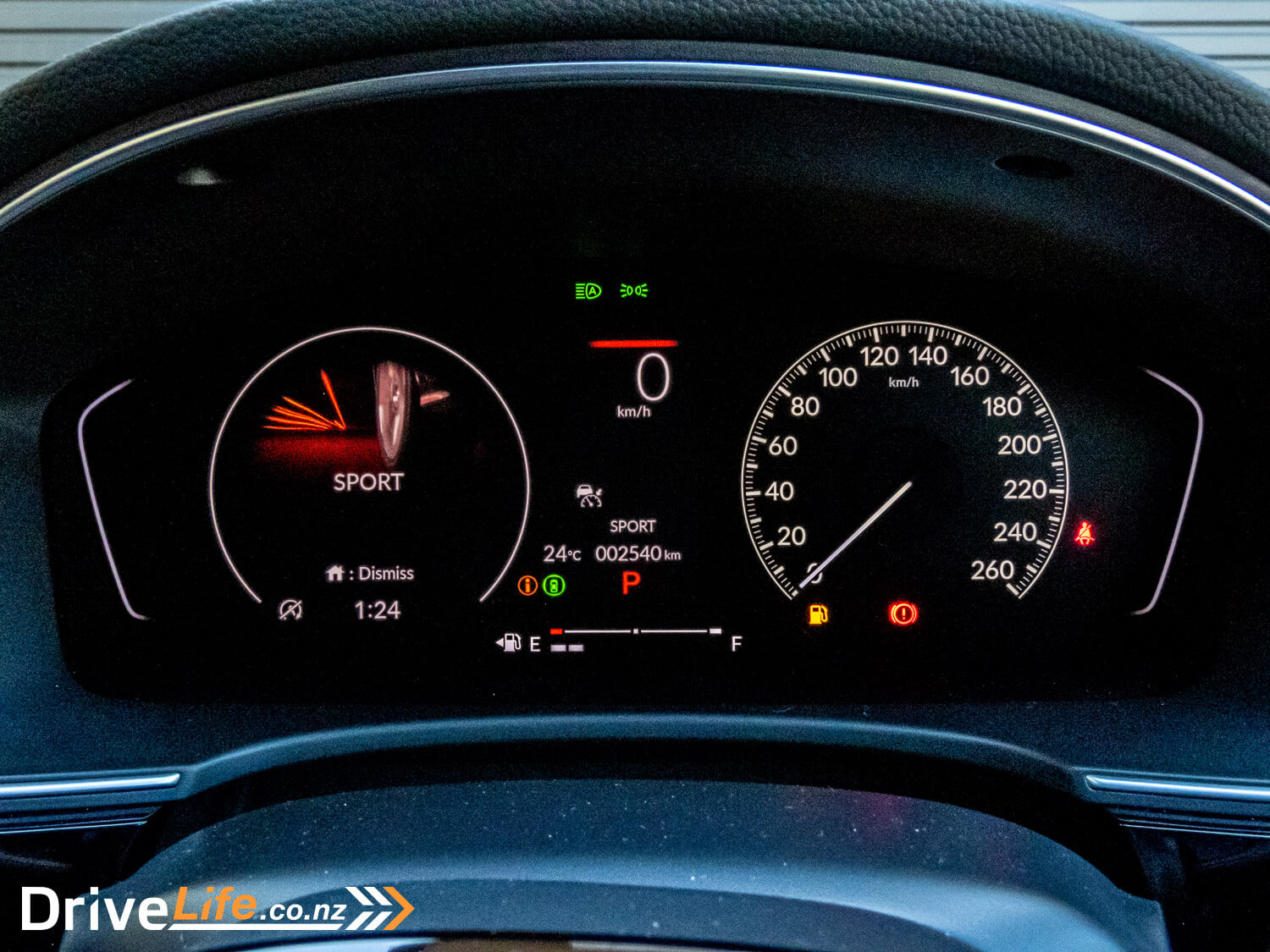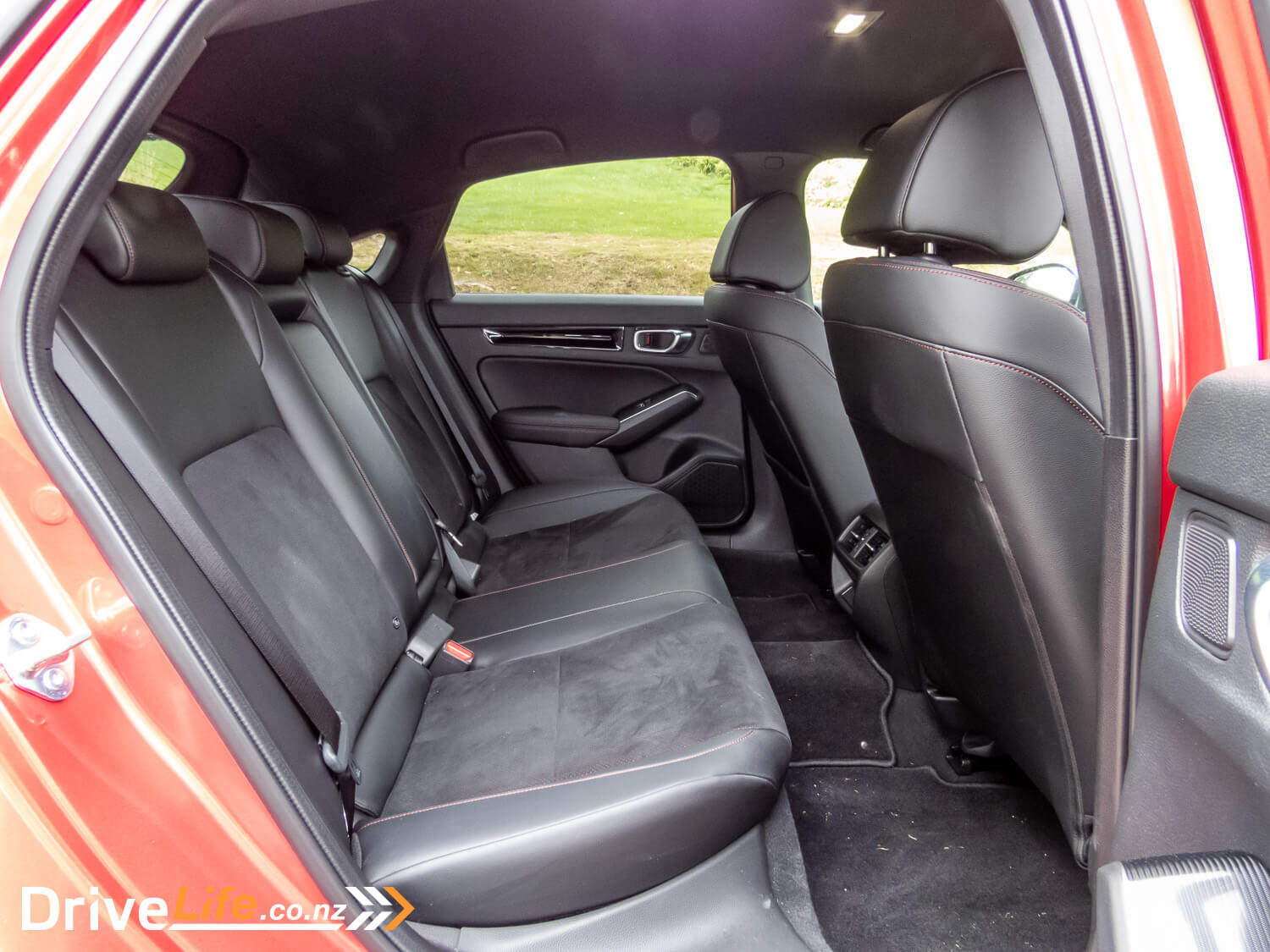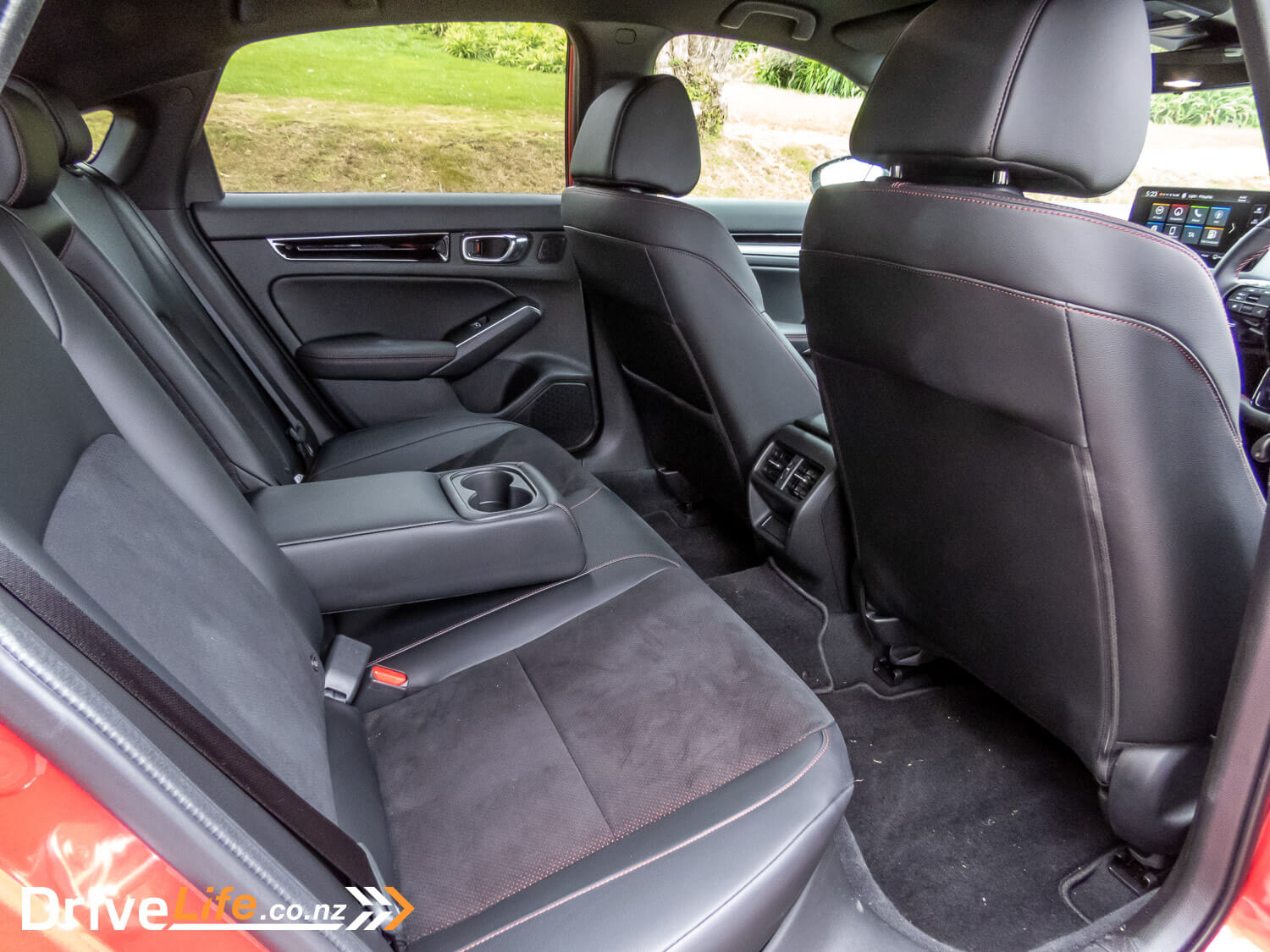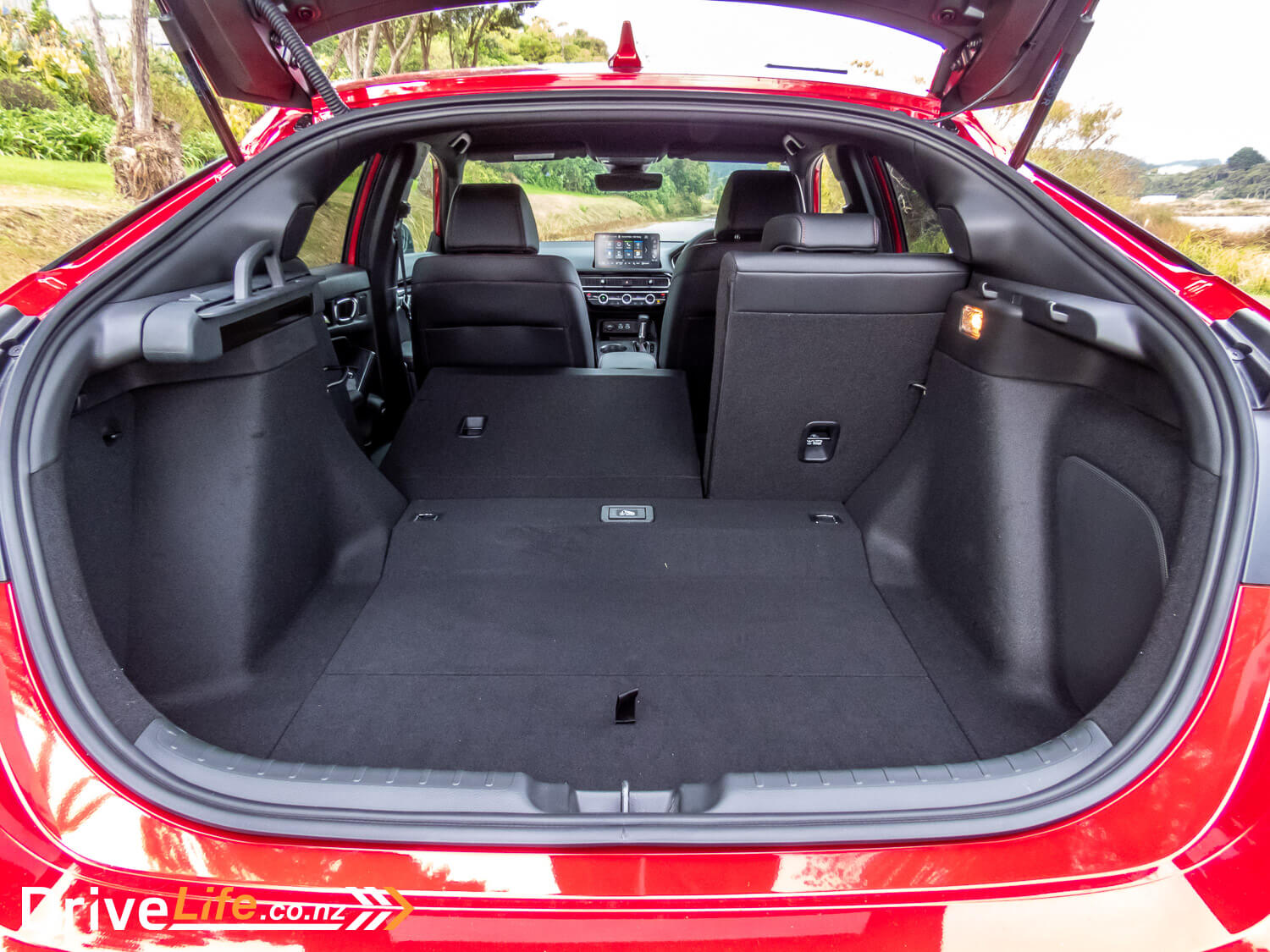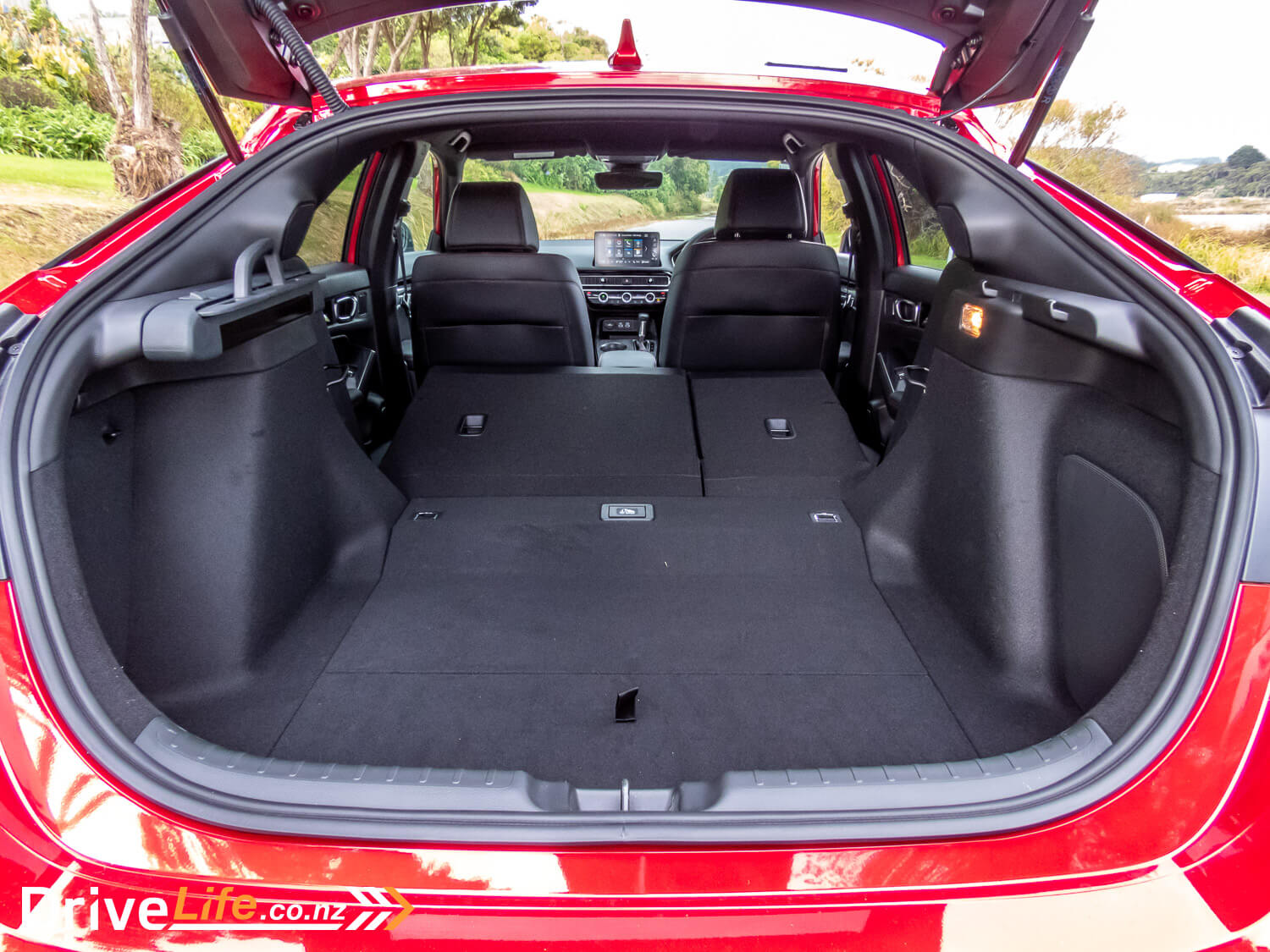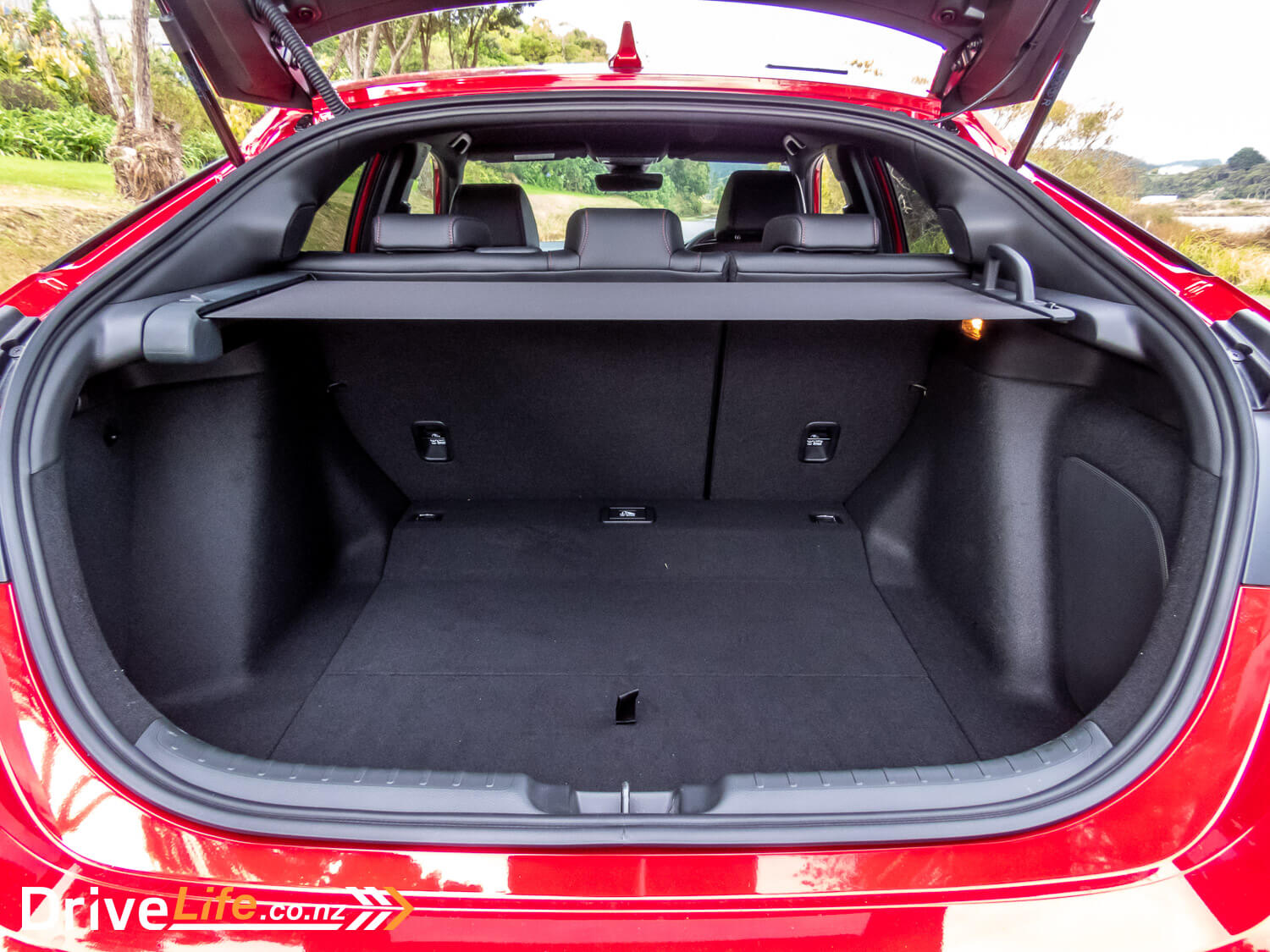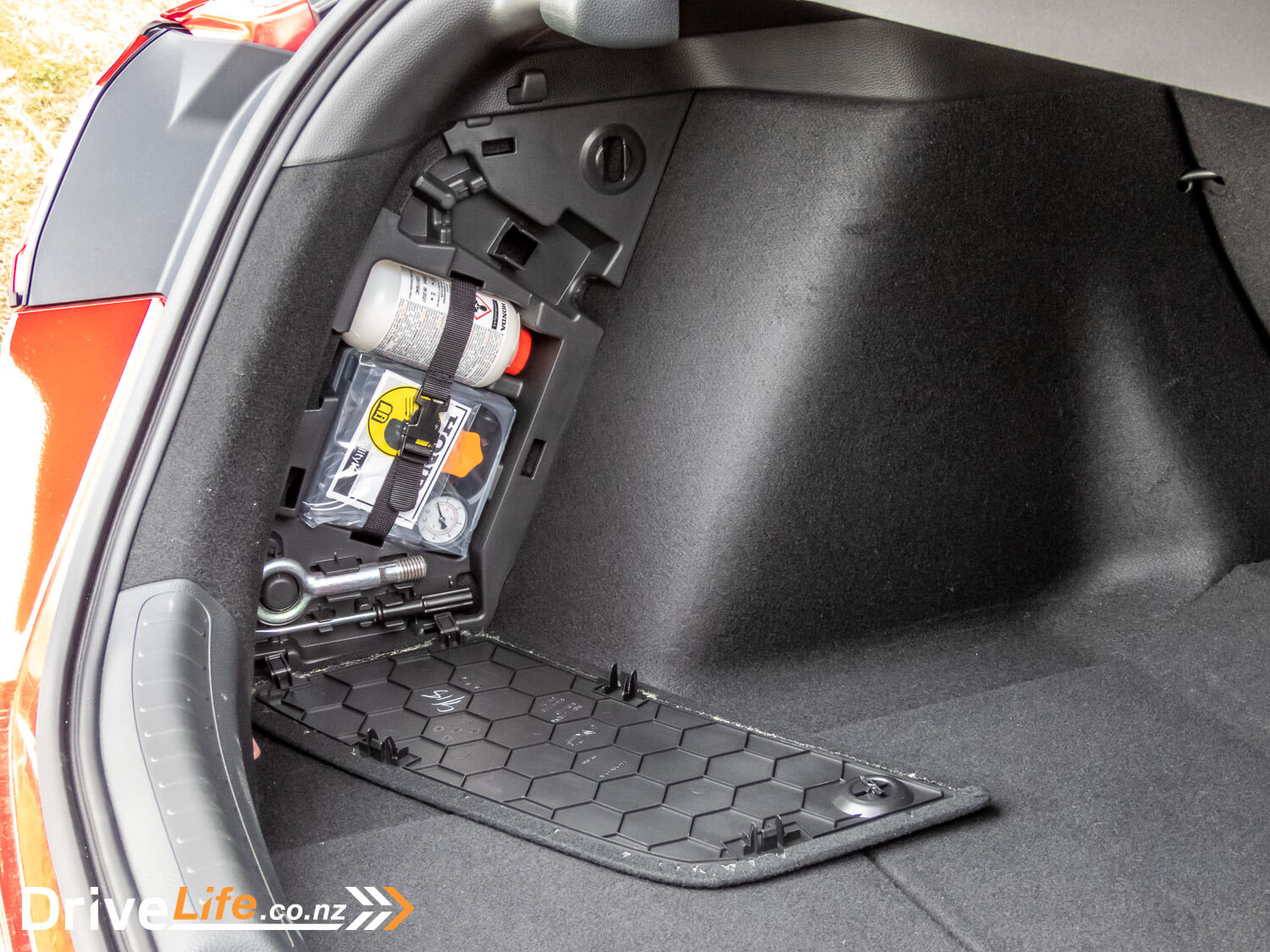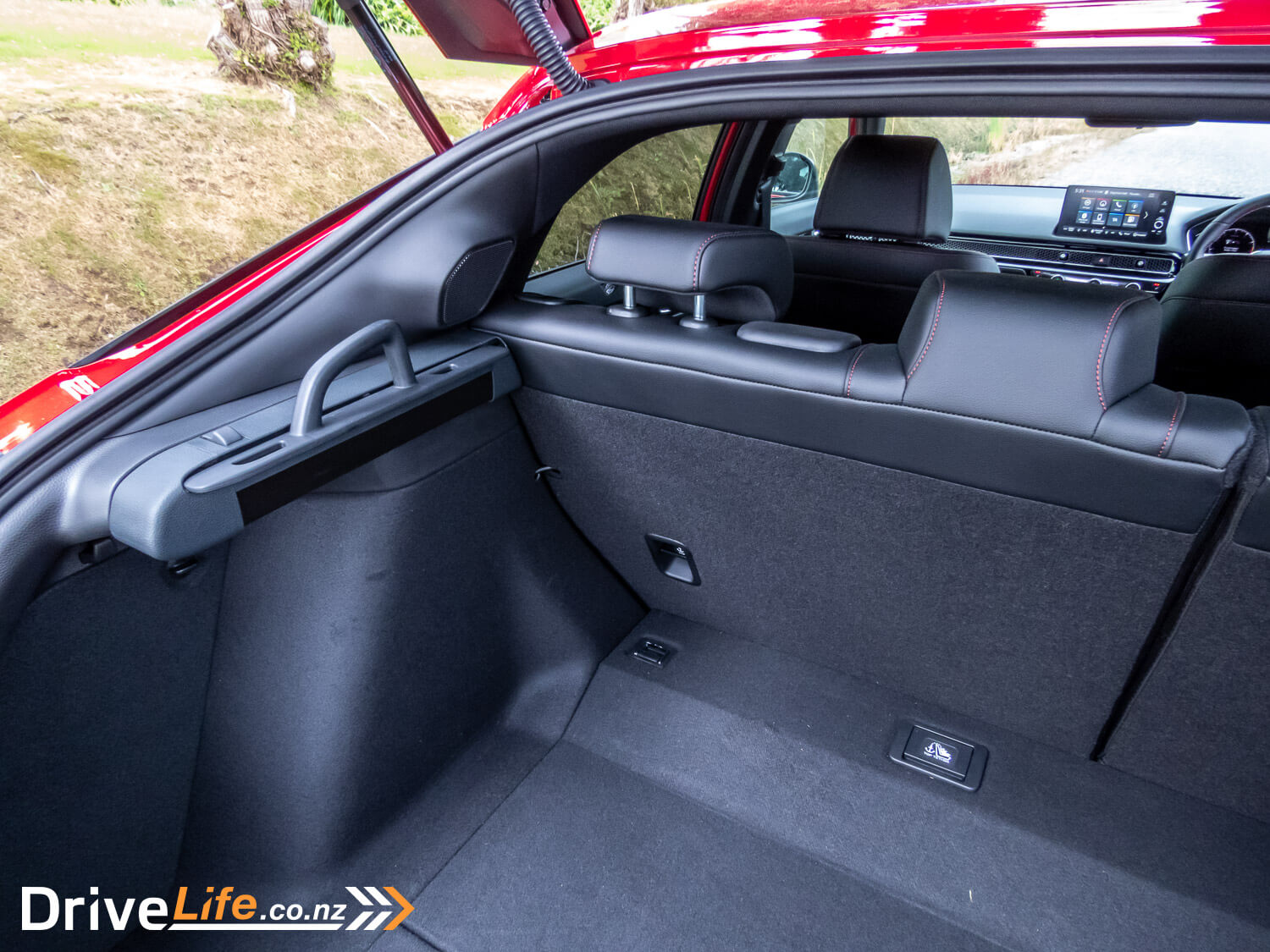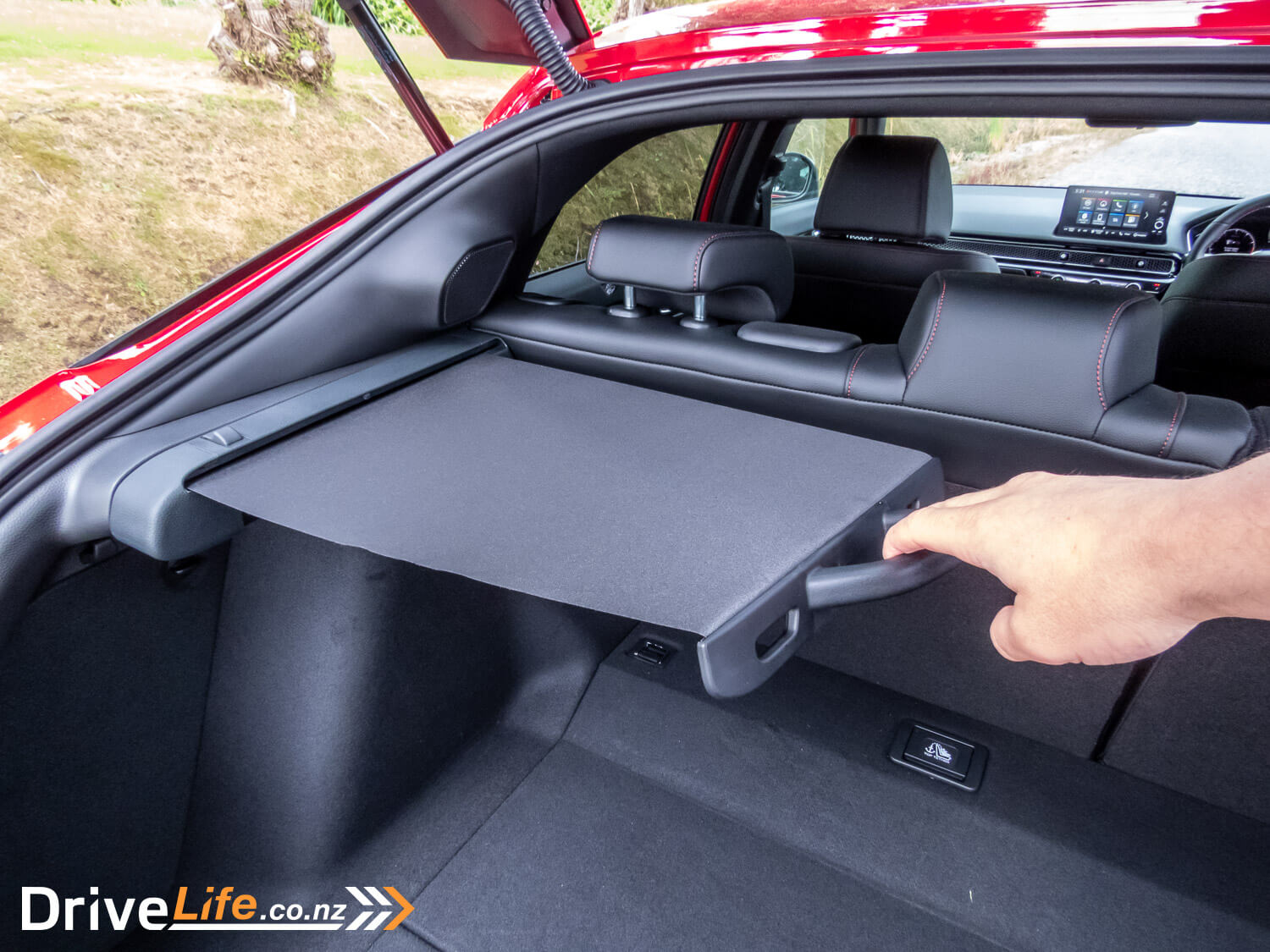Ah, the Honda Civic. The Civic has played a significant role in shaping the global automotive landscape. Many will know the Civic for being a reliable means of transportation. Petrolheads appreciate older Civics for their track-day ability and modification potential. Some might even call the Civic a pop-culture icon, representing the peak of middle-class mediocrity.
In reality, the Civic is far from mediocre. It’s an important car, not just for Honda, but for many international markets. In North America, the Honda Civic is as ubiquitous as the Toyota Corolla, often skirmishing for top sales slot for the small car segment. However, this is not the case for New Zealand.
For whatever reason, the modern Civic has never really caught on with Kiwi buyers. Illustrating this fact, the Toyota Corolla was New Zealand’s seventh most popular vehicle by sales in 2021. The Civic, on the other hand, is nowhere to be seen. The Civic failed to make the top 20 list for 2021 altogether. It’s not some anomaly either, the humble Civic hasn’t featured in the top sellers list for the past five years.
So, why has the Civic fallen out of favour? The reasons are unclear. Perhaps the zany, angular styling of the last generation was too much for some buyers? Or maybe it’s just a fraction too big for the hatchback class it was supposed to compete against? Who knows.
What’s important is that we’ve got the keys to the 11th generation Civic. Can it change the model’s fortunes in New Zealand for 2022?
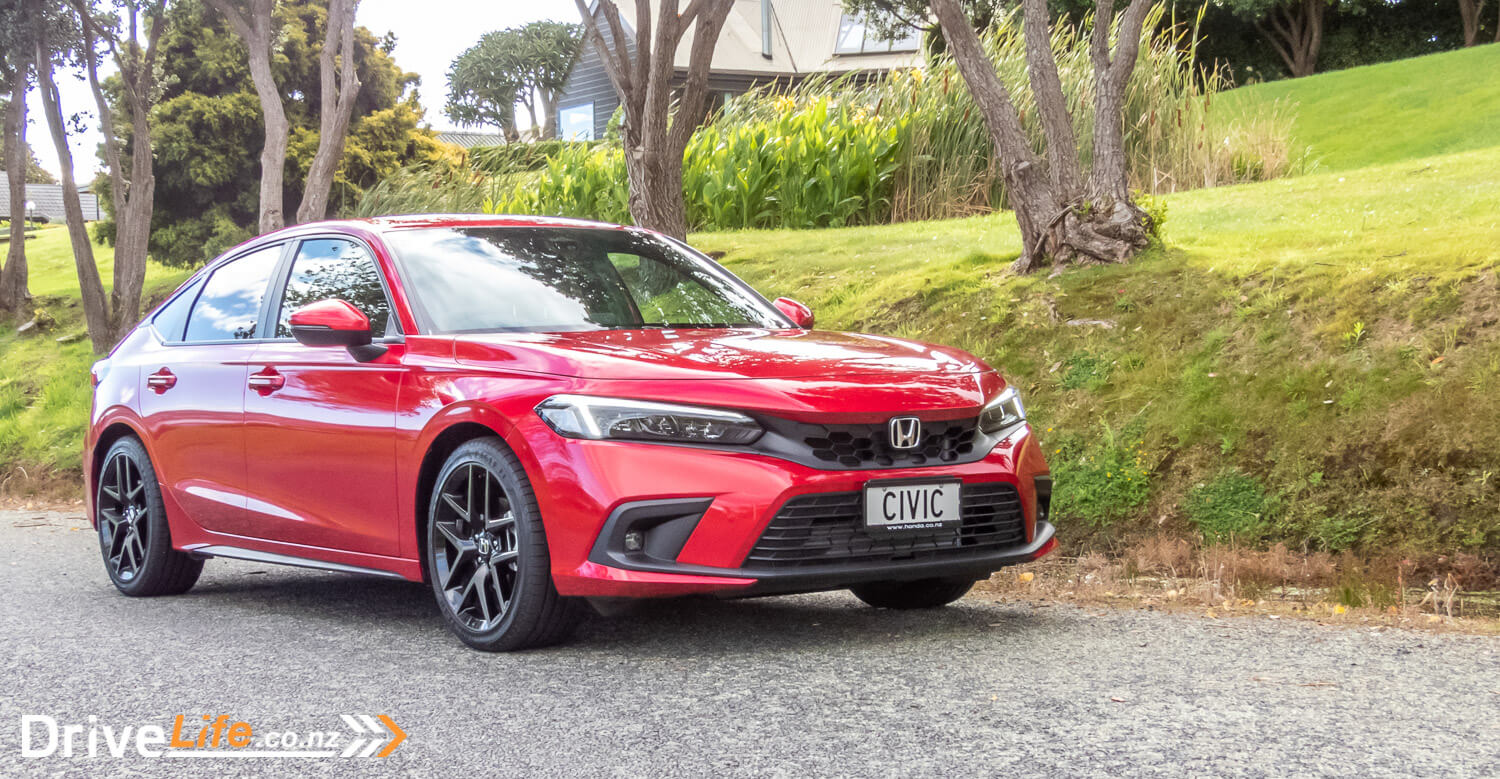
What We Like and Dislike About The 2022 Honda Civic Hatch Sport
| What we like | What we don’t like |
| Executive styling Spacious, airy interior Build quality Performance Good handling Excellent driver assistance tech | Suspension needs fine tuning for ride quality Seats need more lumbar support Not much else… |
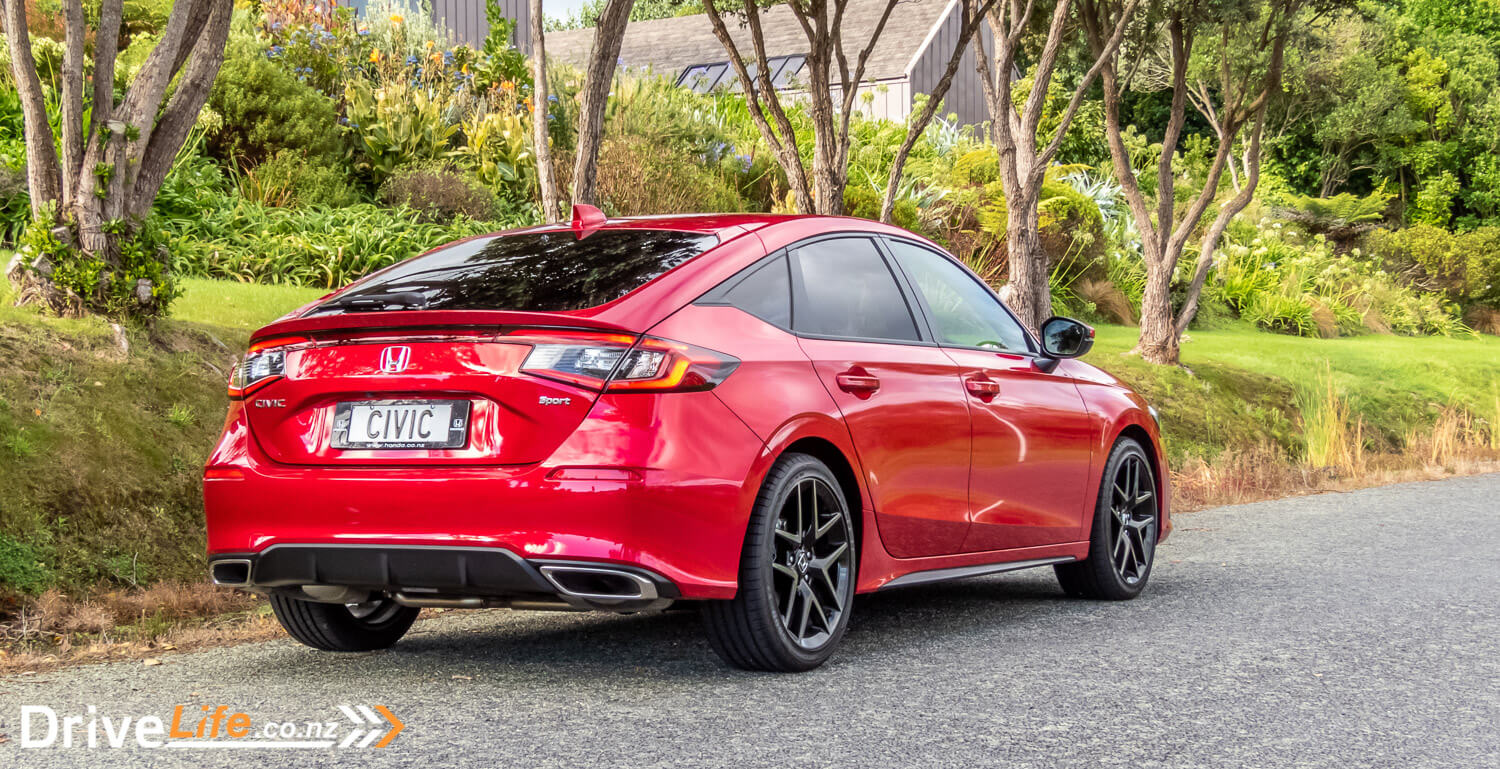
What’s In The 2022 Honda Civic Hatch Sport Range?
Unlike international markets, New Zealand only gets one model, the Civic Hatch Sport.
Although we might see other models further down the track, this is all we have for now.
| Model | Price |
| Honda Civic Hatch Sport | $47,000 |
2022 Honda Civic Hatch Sport Standard Equipment Highlights
- 18″ Alloy Wheels
- 9″ infotainment with SatNav,
- Wireless Apple CarPlay, Android Auto and Bluetooth
- Reverse Camera
- Bose Premium Audio System – 12 Speaker with subwoofer
- Dual Zone Climate Control
- 7’’ LCD Instrument Cluster with Multifunction Colour Display
- 8 Way Power Adjust Driver’s Seat
- 4 Way Power Adjust Front Seat
- Heated Front Seats
- Leather and Ultrasuede Appointed Seat Trim
- Wireless Charging
- Alloy Sports Pedals
- Electro-chromatic Auto Dimming Rear View Mirror
- Rear Privacy Glass
- ISOFIX x3
- Keyless Entry with Remote Central Locking
- Smart Proximity Key
- Push Button Start/Stop
- Remote Window Open Operation
- Automatic ‘Walk Away’ Door Locking
- Red Ambient Interior Lighting
- Automatic Idle Stop
- Blind Spot Monitoring
- Driver Attention Monitor
- LED Headlights with Auto on/off
- LED Daytime Running Lights
- LED Front Fog Lamps
- LED Tail Lights
- Electric Folding Mirrors – Heated, with auto-fold
- Auto Rain Sensing Wipers
- 3 Drive Modes – Sport, Econ, Normal
The Civic Hatch is equipped with Honda Sensing Advanced Safety package as standard. This includes:
- Adaptive Cruise Control (ACC), Low Speed Follow (LSF)
- Collision Mitigation Braking System (CMBS)
- Forward Collision Warning (FCW)
- Lane Departure Warning (LDW)
- Lane Keep Assist System (LKAS) – Traffic Jam Assist (TJA)
- Road Departure Mitigation (RDM)
- Auto High-Beam Support System (HSS)
- Rear Cross Traffic Alert (RCTA)
Additional safety features include:
- Hill Start Assist (HSA)
- Anti-Lock Braking System (ABS), with Electronic Brakeforce Distribution (EBD)
- Emergency Brake Assist (EBA)
- Electric Parking Brake with Electronic Brake Hold
- Vehicle Stability Assist (VSA) with Traction Control (TCS)
- Agile Handling Assist (AHA)
- Emergency Stop Signal (ESS) – Hazard Light Activation
There are four exterior colour options for the Civic Hatch, these being Platinum White, Sonic Grey, Crystal Black and Premium Crystal Red.
For more details on the Honda Civic Hatch Sport, check out the Honda New Zealand website.
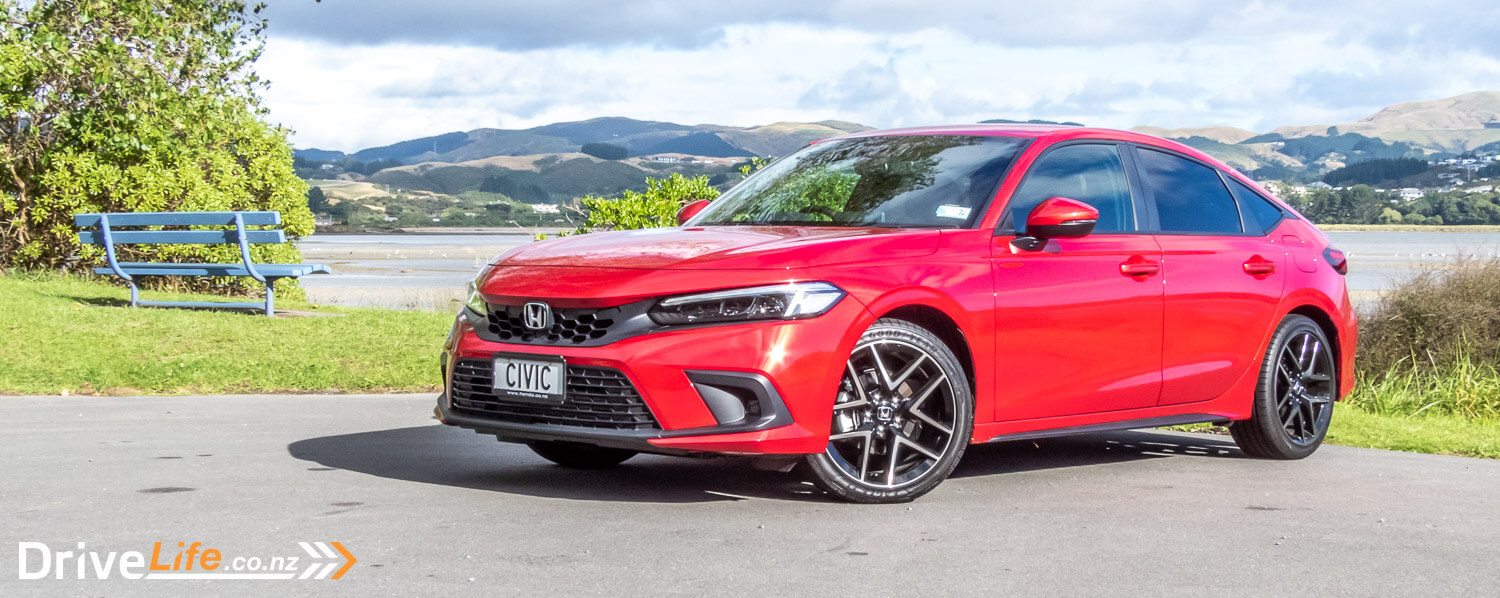
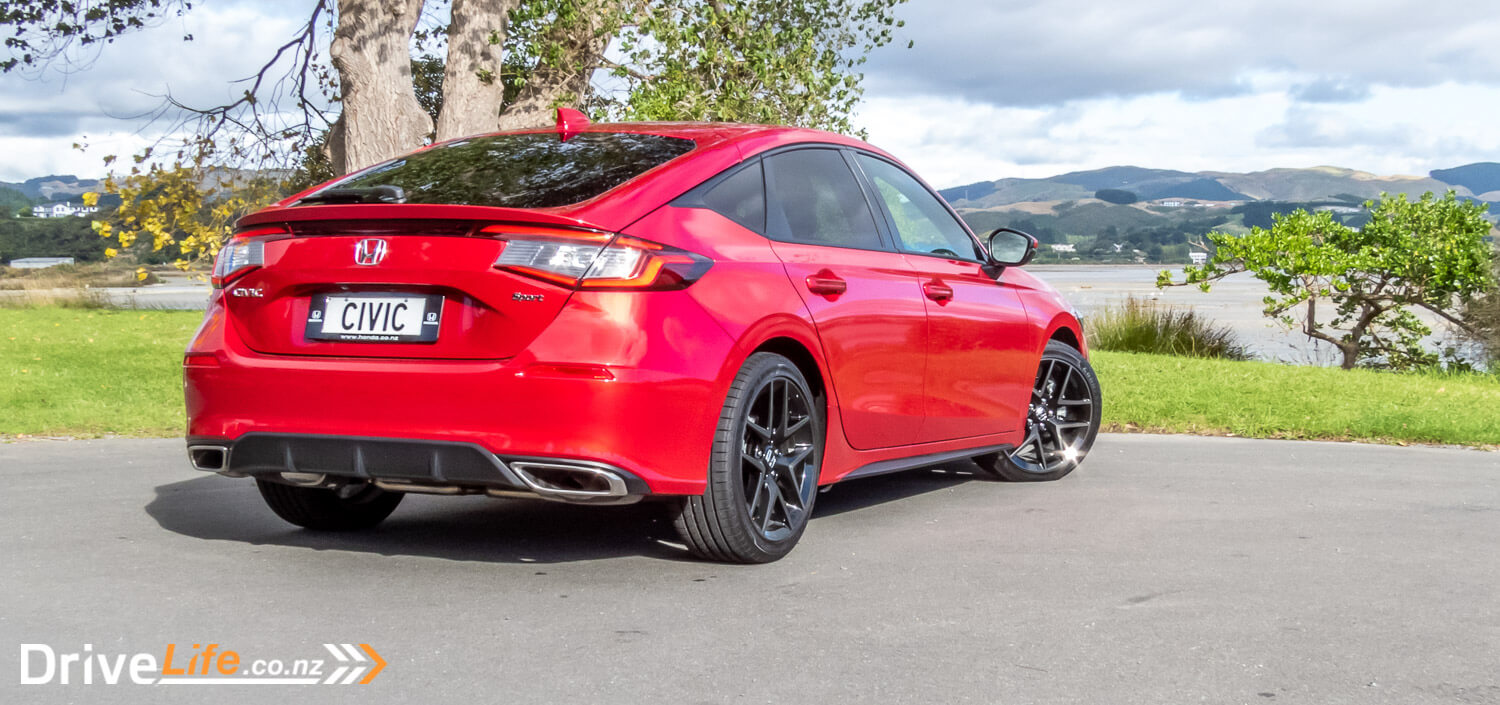
How Does The 2022 Honda Civic Hatch Sport Compare To Its Competition?
The new Civic starts at $47,000, which seems a bit steep compared to a Corolla, which you can get for nearly $10,000 less. It’s also a significant leap up from the previous Civic, which hovered in the $30,000 range. At this price point, you’re competing squarely with the Mazda’s impressive Mazda3. Don’t let the price fool you though, this Civic is worth it.
| Make/ Model | Engine | Power/Torque, kW/Nm | Seats | Fuel , L/100km | BootSpace, litres | Price |
| Mazda Mazda3 Limited | 2.5-litre 4-cylinder | 139/252 | 5 | 6.6 | 295 | $49,890 |
| Mini Cooper Classic Plus | 1.5-litre turbocharged 3-cylinder | 100/220 | 5 | 5.7 | 278 | $49,750 |
| Volkswagen Golf TSI R-Line | 1.4-litre turbocharged 4-cylinder | 110/250 | 5 | 6.4 | 381 | $48,990 |
| Honda Civic Hatch Sport | 1.5-litre turbocharged 4-cylinder | 131/240 | 5 | 6.3 | 449 | $47,000 |
| Hyundai i30 N-Line | 1.6-litre turbocharged 4-cylinder | 150/265 | 5 | 7.5 | 395 | $44,990 |
| Ford Focus ST-Line X | 1.5-litre turbocharged 3-cylinder | 134/240 | 5 | 6.4 | 443 | $42,990 |
| Kia Cerato GT | 1.6-litre turbocharged 4-cylinder | 150/265 | 5 | 7.6 | 428 | $42,990 |
| Skoda Scala Style | 1.4-litre turbocharged 4-cylinder | 110/250 | 5 | 5.7 | 467 | $41,990 |
| Toyota Corolla Hatch ZR | 2.0-litre 4-cylinder | 125/200 | 5 | 6.7 | 208 | $38,990 |
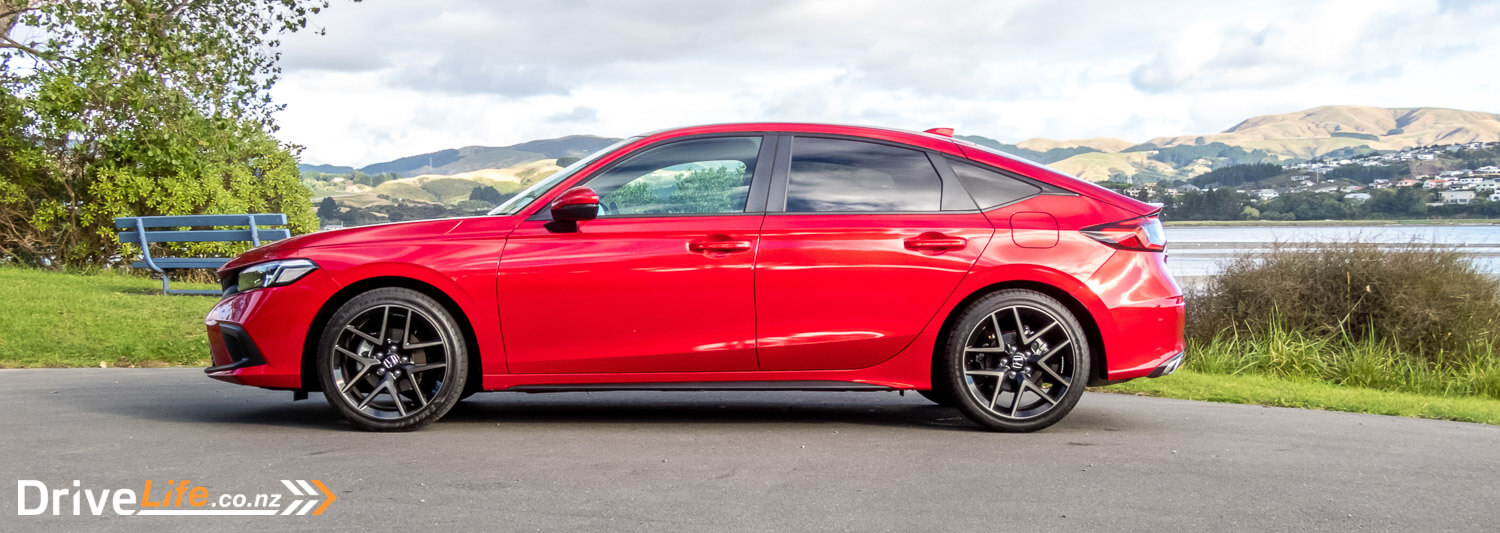
First Impressions Of The 2022 Honda Civic Hatch Sport
I don’t fully understand Honda’s design department. It seems they’ll sway from conservative to daring designs with each Civic generation. The last generation Civic was all angles whereas this new Civic has smoothed every edge out.
However, this generation is unique because it’s the first Civic built upon Honda’s new global platform. That’s to say, this car is designed in Japan and sold to the entire world in one form.
So, it doesn’t come as a huge surprise that Honda is erring on the conservative side with this generation. However, this Civic is anything but ordinary.
From the sculpted fastback body to the sharp alloys and LED lights, the eleventh-gen Civic carries the aura of a small executive saloon. Honestly! Give it a good eyeball when you’re in the showroom, you’ll see what I mean. Dare I say, it looked quite elegant parked on the driveway, particularly when the metallic red paint caught the light at the right angle.
I never thought I’d be using Honda Civic and elegant in the same sentence, but here we are.
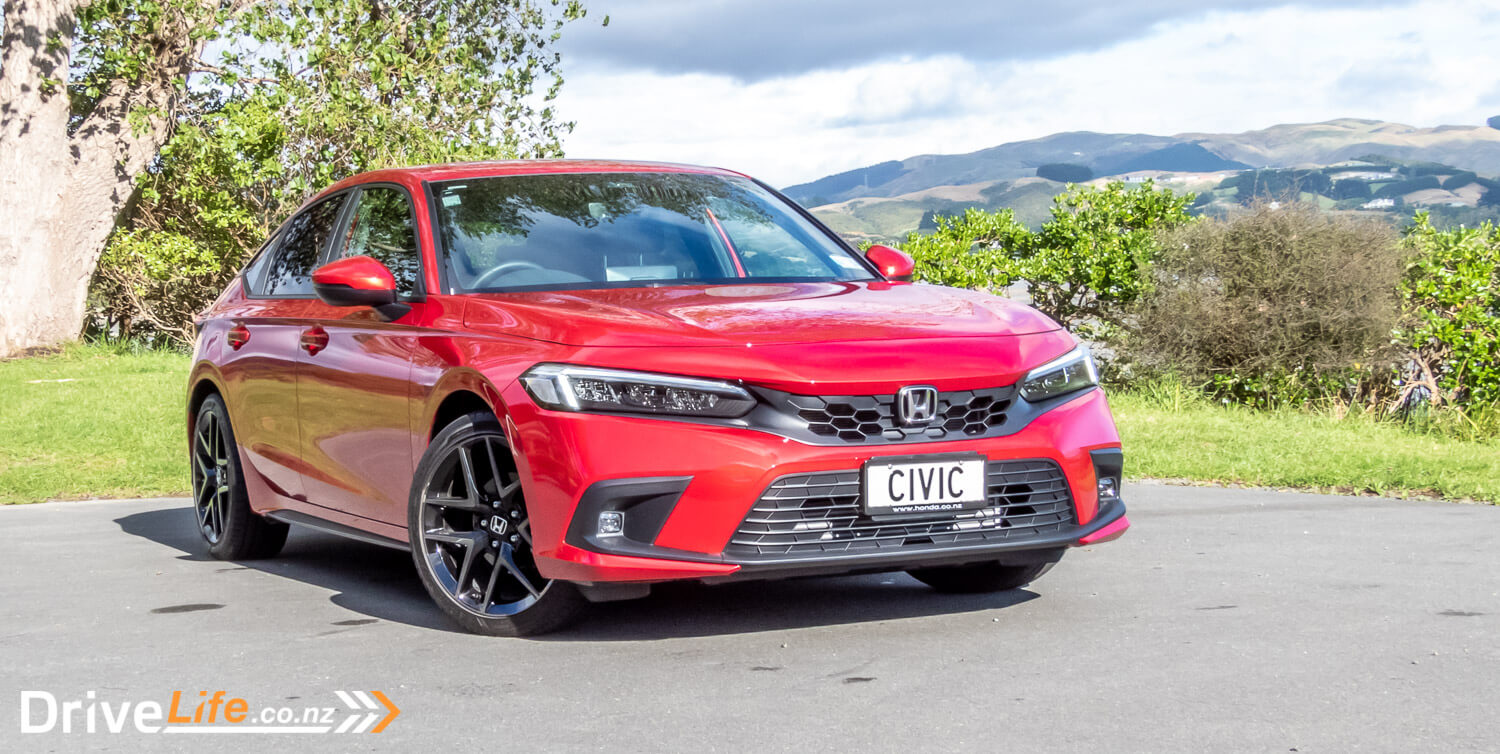
What’s The Interior Like In The 2022 Honda Civic Hatch Sport?
I recall the days when many small compact cars were regarded as disposable items. The interiors were spartan on the inside, and seldom did you have many features beyond a stereo and air-conditioning.
These days, cars have the opposite problem. Many are bursting at the seams with technology, which in turn has made cars pretty darn expensive. Based on our experience, manufacturers have had mixed success integrating all this tech into their interiors.
Some have responded by simply taking the Tesla approach, smacking an enormous screen in the centre and digitising all the controls. Others, like Volkswagen, have experimented with haptic touch controls like in their latest Golf.
The problem with soft controls is they’re often unintuitive to use when you’re actually piloting the vehicle. A simple task, such as changing the temperature, requires precision when driving down a bumpy road. Haptic touch controls, on the other hand, are spawn of the devil. In my opinion, haptic controls do not belong in any car.
This Honda Civic is possibly the first car to get the balance nearly bang-on perfect. The Civic manages to blend all the latest modern amenities with legacy physical controls, the sort which make usability on a daily commute excellent.
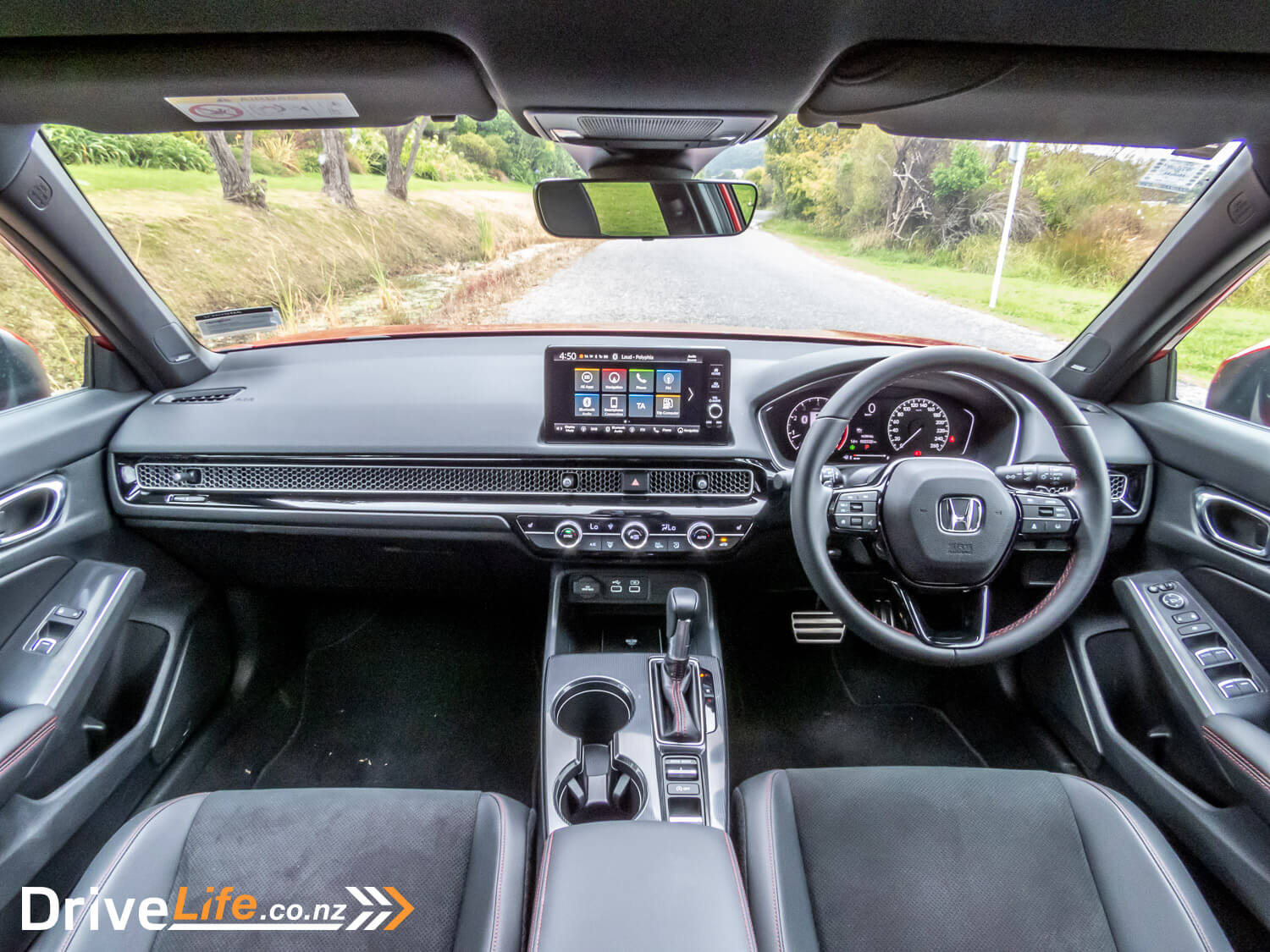
When you first set foot inside the new Civic, you get an immediate sense of quality. Everything from the cabin material choices through switchgear feels high-quality and thoughtfully laid out.
There are physical dials and buttons for all the core functions, such as the climate controls and heated seats. There’s also a physical volume knob, along with physical controls on the bezel of the infotainment screen for core menus. The steering controls are tactile and matte-textured, so they won’t get all gummed up with human slime. Above all, the climate controls dials have a satisfying click when you interact with them.
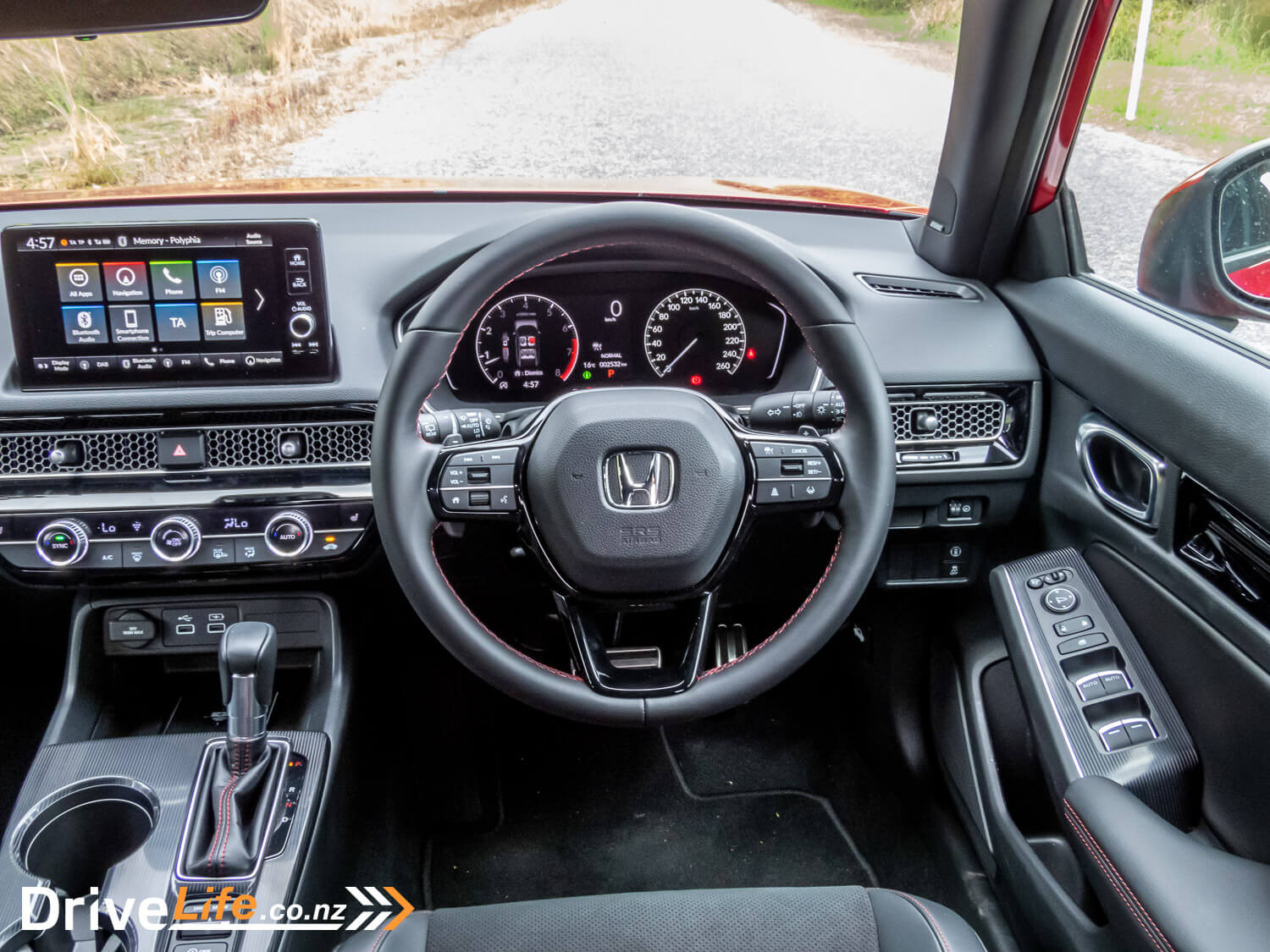
Although our Civic had many dark materials inside the cabin, the cabin allowed plenty of light inside. External visibility is excellent too.
While the Civic’s straight-lined interior mightn’t have the wow factor of the Mazda 3’s cabin, the Civic easily matches it in quality. Importantly, there is absolutely nothing frustrating about the design of this interior, which is praise I can seldom give to many cars.
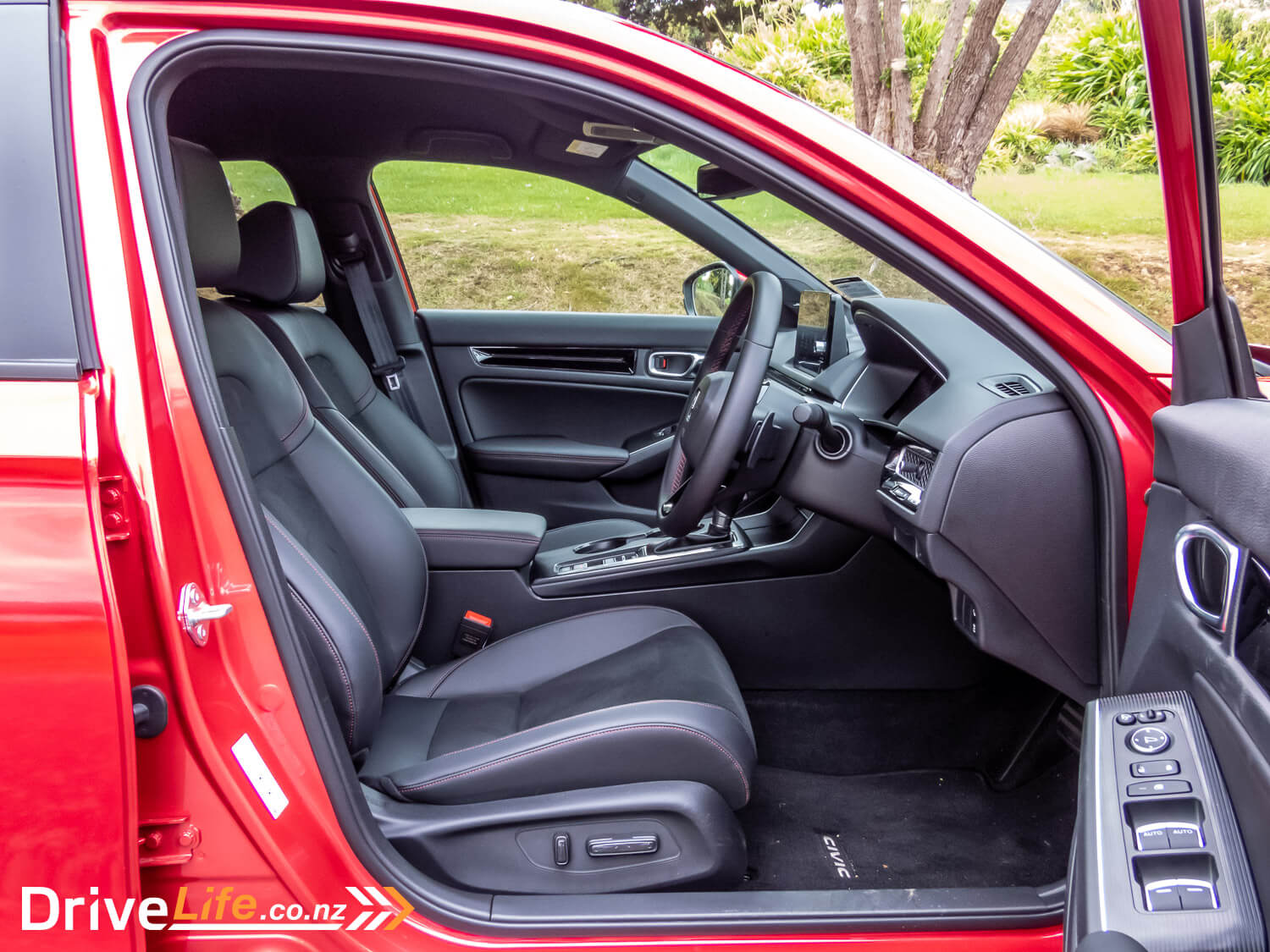
Situated atop the dash is a new 9’’ infotainment unit, running Honda’s latest user interface. The once slow and clunky system which came with the last-gen car has now become one of the best in its class.
The screen resolution is excellent, as are the colour and black levels. The system is responsive to the touch and the interface uses a tile layout, which is easy to use.
The system is linked with a Bose 12-speaker audio system, which includes a subwoofer. The audio system has a warm soundscape, which is traditional for Bose systems. My criticism is with the depth of sound, which fails to capture lows accurately. Regardless, it’s a solid performer and easily one of the best offerings at this price point.
The instrument cluster is a half digital, half physical arrangement. The digital side offers a small degree of configurability, but nothing extensive. This aside, everything is clean, uncluttered and clearly legible. Interestingly, North American cars get a full digital cluster, whereas Kiwi buyers seem to get the cheaper version.
Turning attention to seating, the seats are upholstered with a leather/suede combination, with contrasting red stitching to accompany the red LED door strips. In the front, Honda has installed what it calls anti-fatigue seats, allegedly designed to be easier on the body over long trips. Personally, I thought the seating required more lumbar support. However, I cannot fault the side bolstering or the driving position.
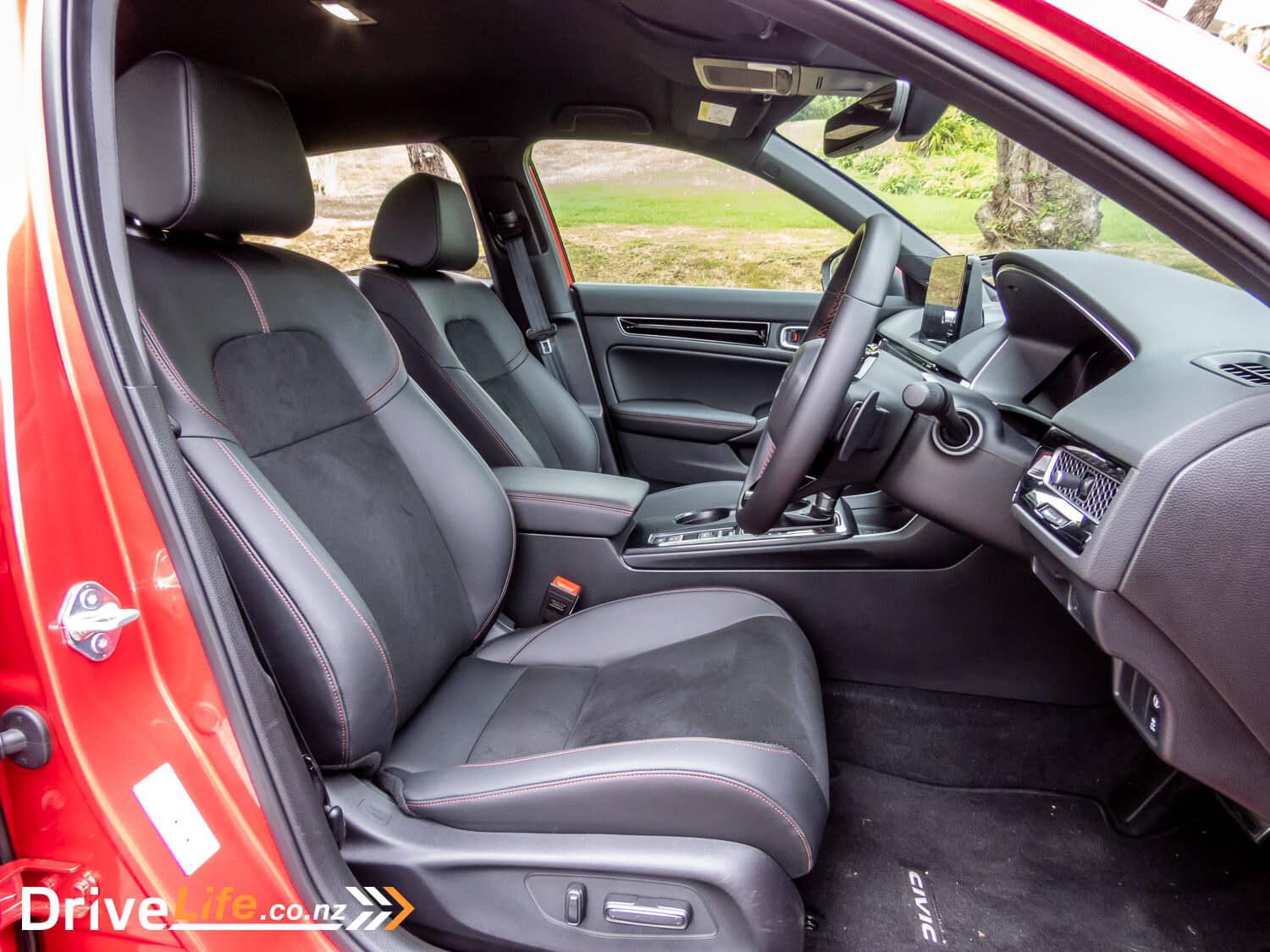
If you’re familiar with the Honda lineup, you’ll be aware that space, or rather, the efficient use of it, is an area where Honda excels. In some cases, you’d think Honda must have trademarked the rights to Doctor Who’s Tardis in the early years.
This is particularly evident in the rear of the Civic. The rear seats offer plenty of legroom and enough headroom for adults to sit comfortably on long journeys. Then there’s the cargo space, which could honestly put many small crossover SUVs to shame.
The boot space is 404 litres, with an additional 45 litres under the boot floor. Pop the second row down, you can get up to 1,212 litres of space if you’re not averse to a dirty roof-liner.
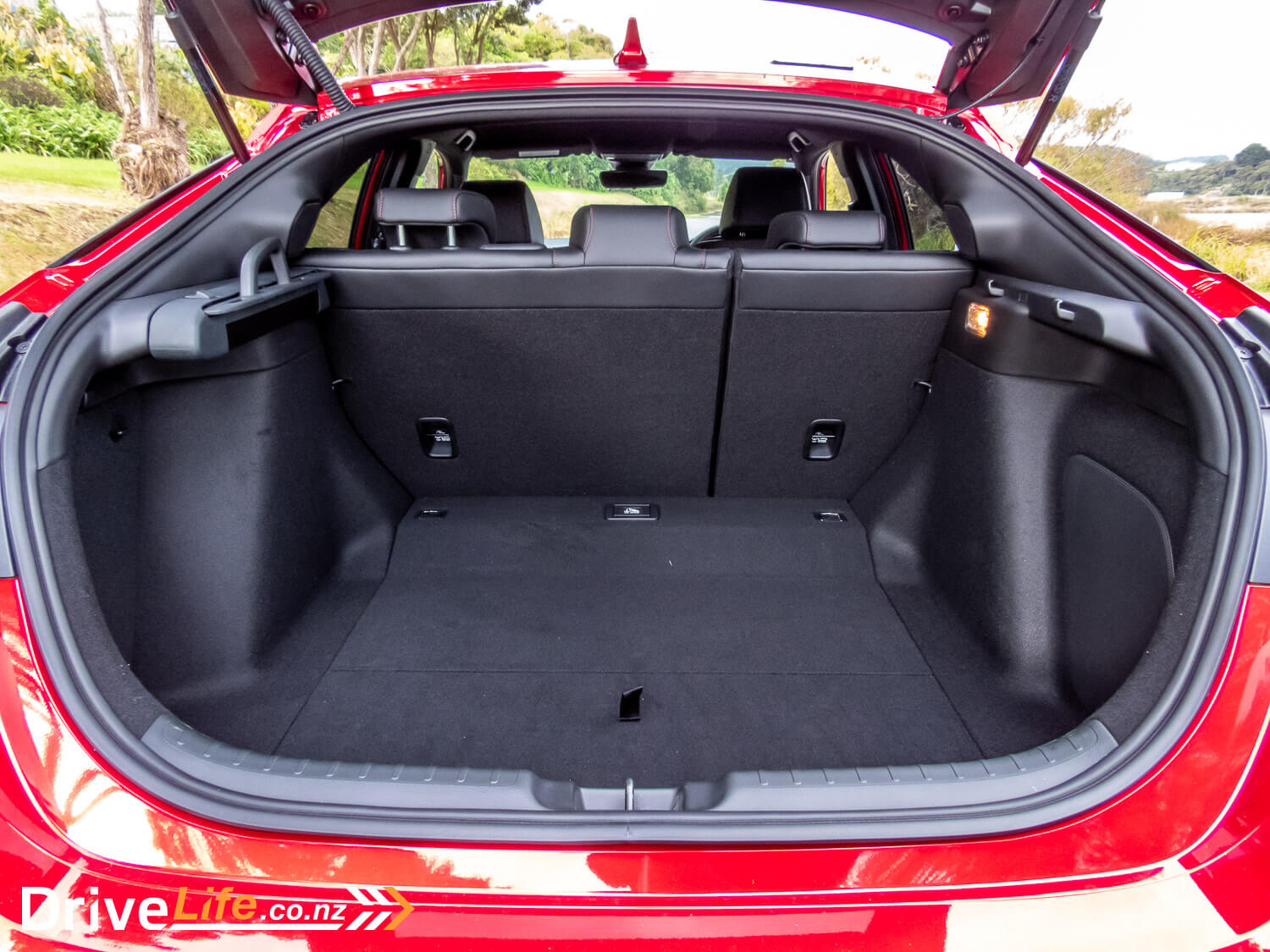
For some context, a Toyota Corolla only offers a measly 208 litres of space. We can take it a step further by comparing it with, say, the Kia Seltos, a small box-shaped crossover, which offers 433 litres of boot space. If we include that extra 45 litres, the Civic scores a technical victory.
Unfortunately, those additional 45 litres come at the expense of a spare tyre. Instead, Honda gives you a puncture kit, which is cleverly hidden behind a side panel in the boot.
Speaking of clever items, Honda’s substitute for a parcel tray is a small retractable cover, which can be mounted on either side of the boot. This solution is a stroke of genius and left me wondering why other car companies haven’t done it this way.
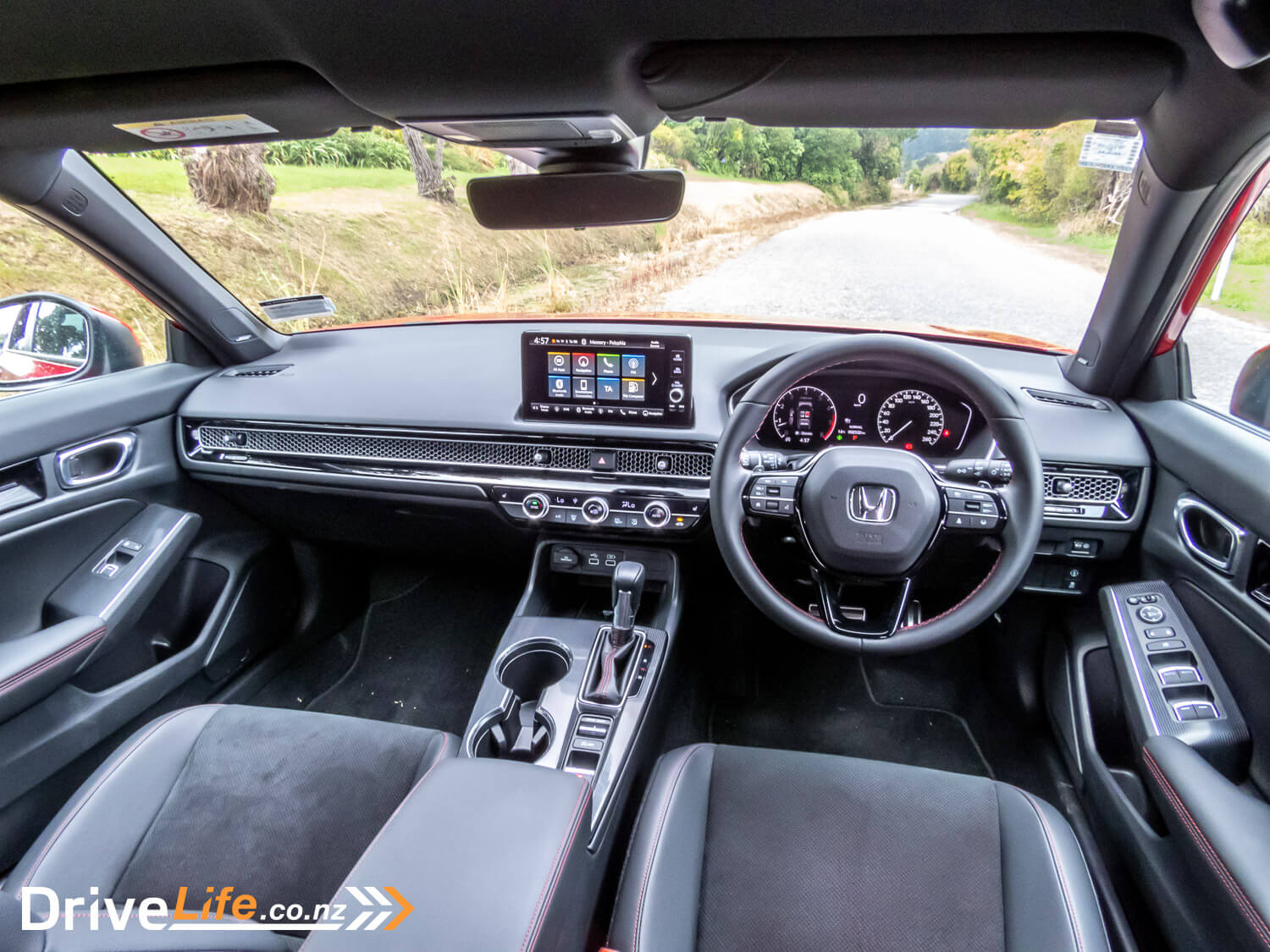
What’s The 2022 Honda Civic Hatch Sport Like To Drive?
The Honda Civic has come a long way since I first drove one. Admittedly, the first time was in an old and somewhat tatty 1992 Civic Hatch. Even then, they were great fun to throw around. Obviously, this Civic is going to be more than a tad different.
Powering the Honda Civic Hatch is a 1.5-litre turbocharged 4-cylinder (L-15), producing a healthy 131kW of power and 240 Nm of torque. Keeping with the adage of “if it ain’t broke, it don’t need fixing”, this engine is carried over from the previous generation Honda Civic with a handful of tweaks.
This is far from a bad thing, as Honda is known for making excellent engines. We praised this engine for its refinement when we last experienced it in the 2017 Honda Civic RS Sport Hatch. Honda has managed to eke out more power for 2022, yet its characteristics are still the same, being quiet and exceptionally well refined.
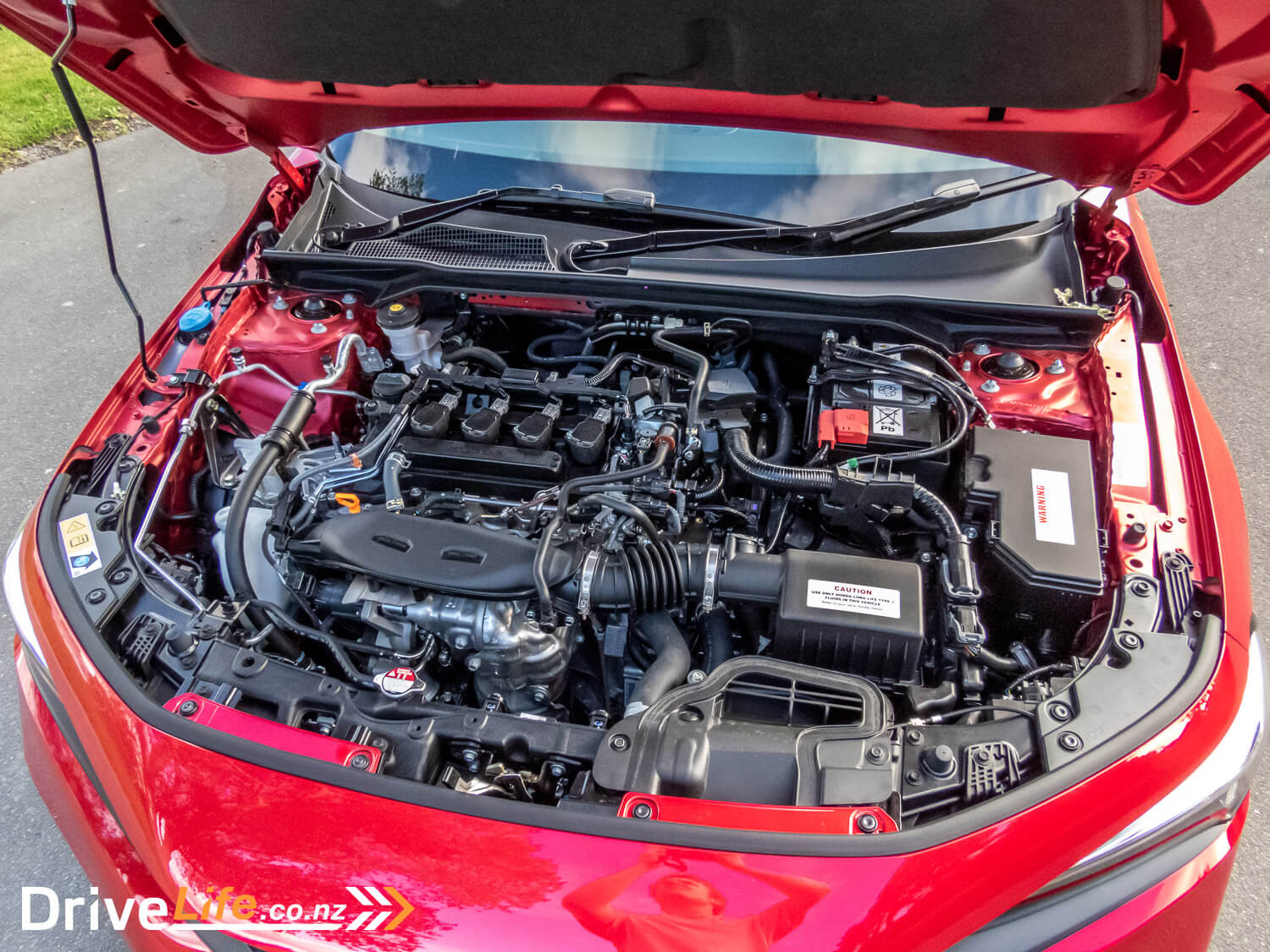
Although Honda calls it a VTEC engine, it’s a far cry from the rev-happy, cam-jumping VTEC engines which characterised Honda engines in the 1990s. This turbocharged engine has variable valve timing, but not the electronic lift control component which gave older VTEC engines their distinctive powerband. In other words, there’s no VTEC kicking in, yo…
Instead, this engine is happiest in the mid-range. It never felt short of grunt when travelling around the speed-limit and the engine pulled strongly at the top-end of its power range. That said, the Civic isn’t particularly brisk off-the-line, needing to stretch its legs a bit before you get the best out of the engine.
The engine is paired with a CVT gearbox, tad middle-of-the-pack compared to others on the market. It has a few typical CVT traits, but otherwise the performance of which is totally inoffensive. CVT’s have come a long way from how they were in the early 2000s, and I can guarantee you that 90% of buyers won’t even notice any issues.
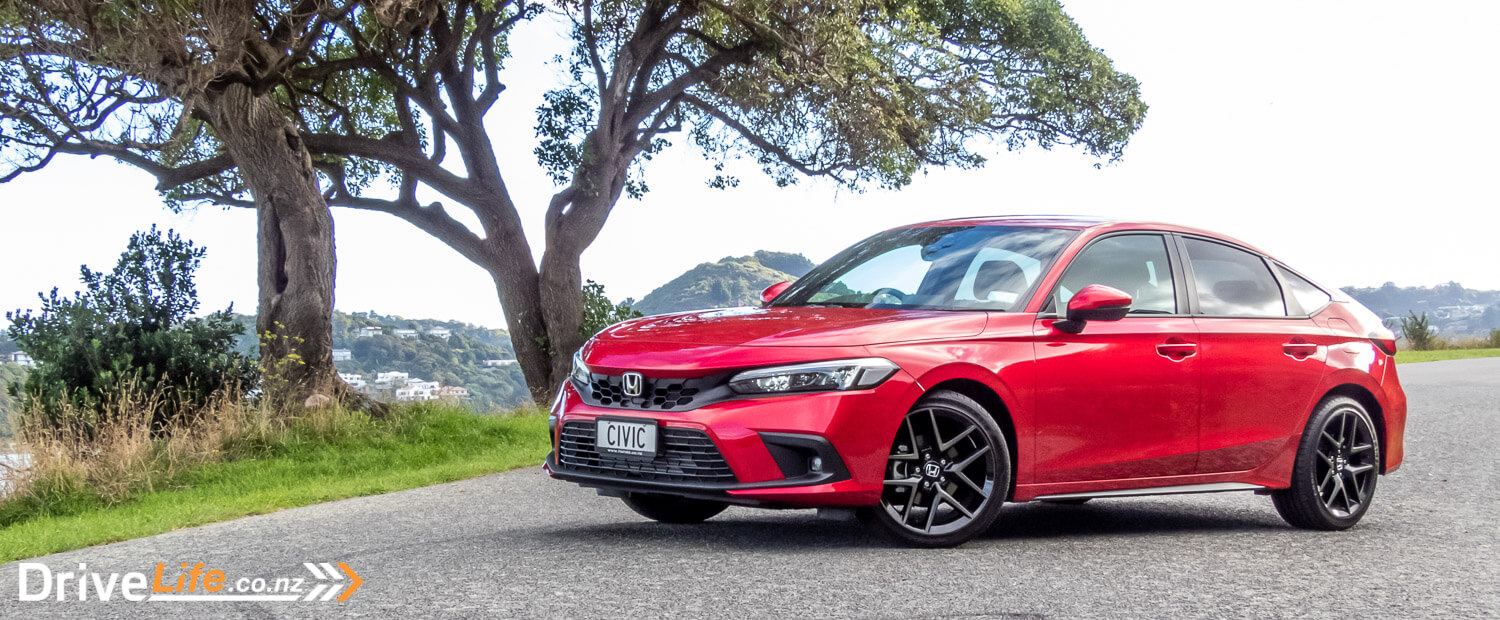
Aside from small CVT quibbles, this engine-gearbox combination is a solid performer in day-to-day use.
Better still, the Civic is designed to run on 91 octane even though this is a turbocharged engine. On the subject of fuel economy, we achieved a fuel consumption rate of 7.5L per 100kms. This is a reasonable margin off Honda’s claimed figure of 6.3L per 100kms, but for a turbo-4-cylinder engine without hybrid assistance, this is a fairly reasonable result.
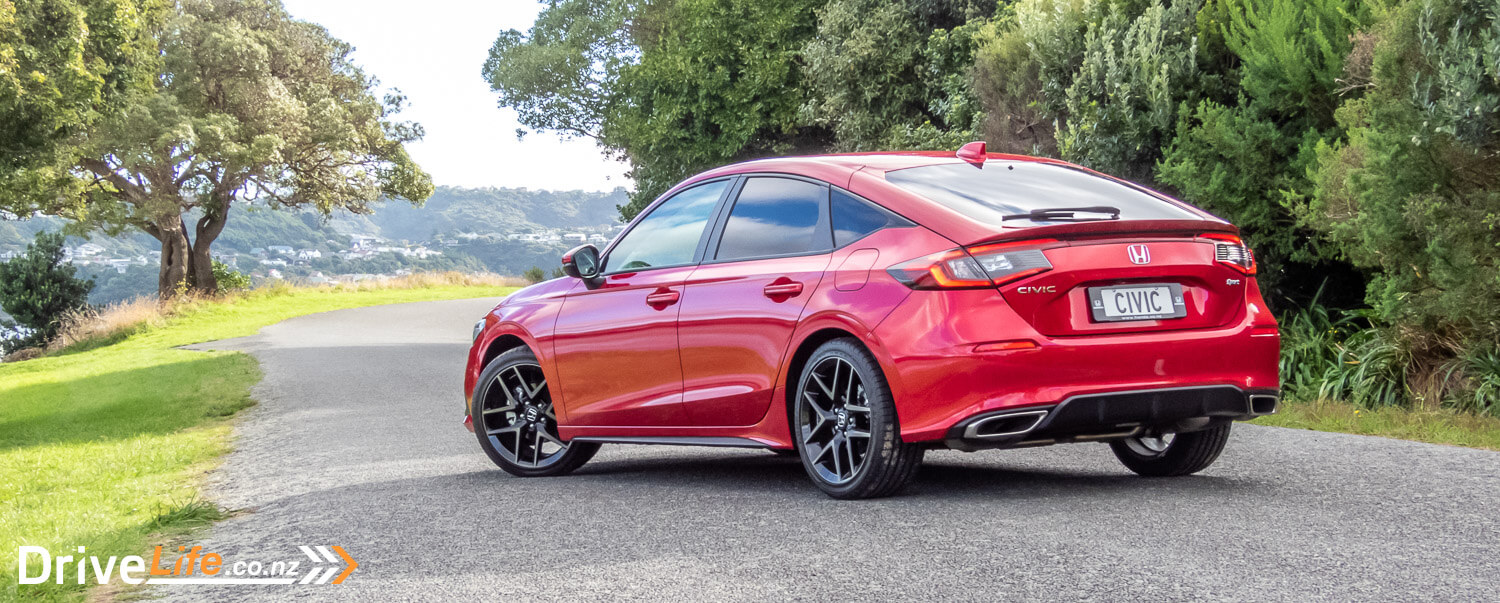
Given all of this Civic’s sensibilities, you might be thinking that the Civic is about as fun as beige trousers. However, if old Hondas were known for anything, it’s for good handling characteristics, and this Civic is a similar story.
Start entering corners with some pace, and you’ll be pleasantly surprised. The Civic corners flat, introducing only a fraction of body-roll. The chassis rotates naturally and changes direction well, meaning the Civic doesn’t feel unsettled with brisk driving. The steering has a good weight to it too, even if there’s not much feedback. Dynamically, it’s all very satisfying.
I don’t imagine there are too many drivers tossing a new Civic around the backroads on a daily basis, but it’s nice to know the Civic can rise to the occasion.
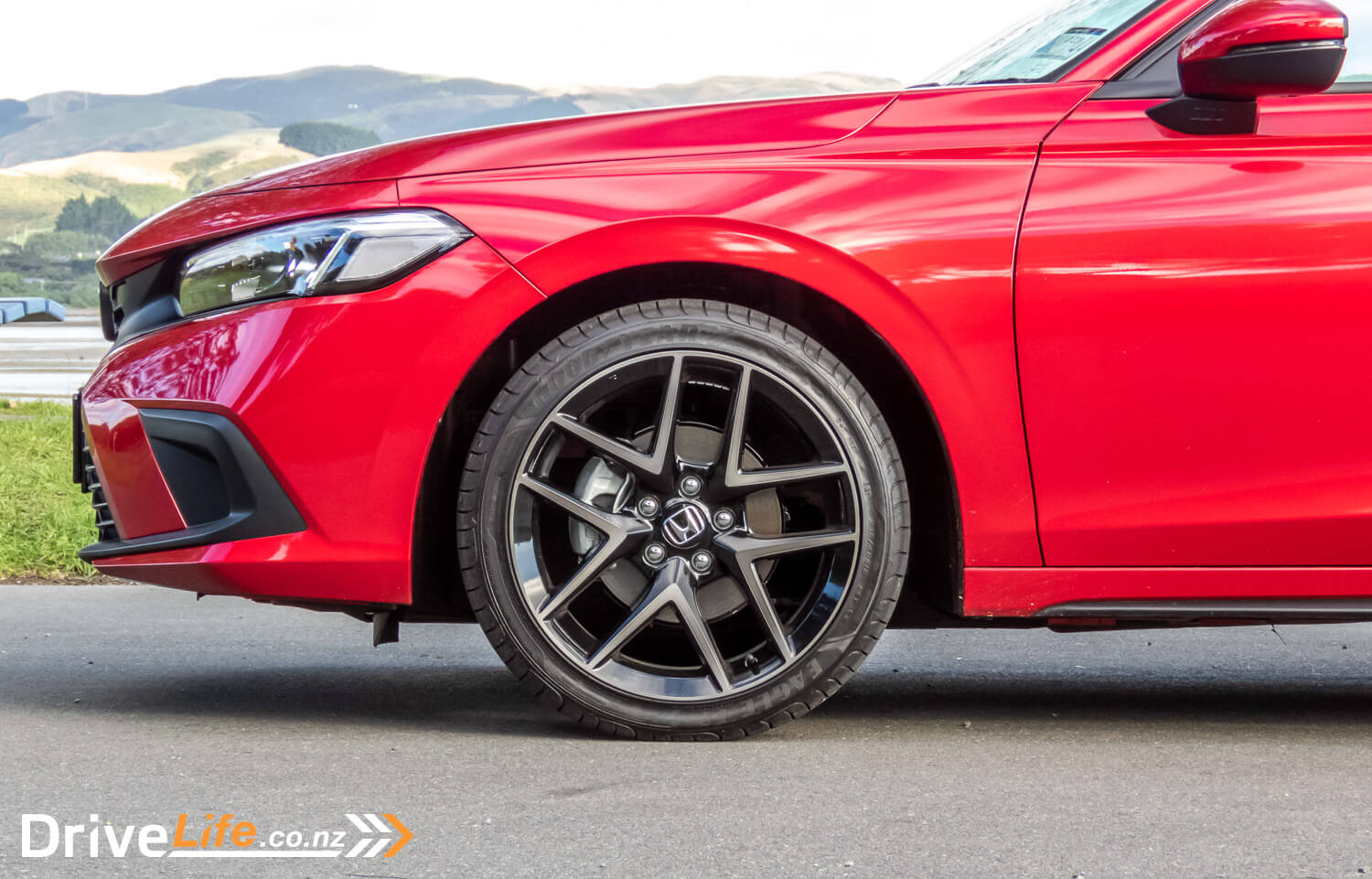
If I had any criticisms, it would relate to the ride quality. Although the Civic is comfortable on most smooth surfaces, the suspension felt a bit overactive when driving along at suburban speeds. It seemed to react to every small undulation, meaning the car occasionally felt unsettled. Don’t get me wrong, the ride quality is generally fine, but it needs fine-tuning.
Honda has pointed out that the Civic has been developed with the North American consumer in mind, and ride quality was almost universally praised by reviewers in North American markets. Perhaps Honda could benefit from investing in a local suspension tune for New Zealand buyers. For now, this is a weak point of the Civic, and a gain for the Mazda3.
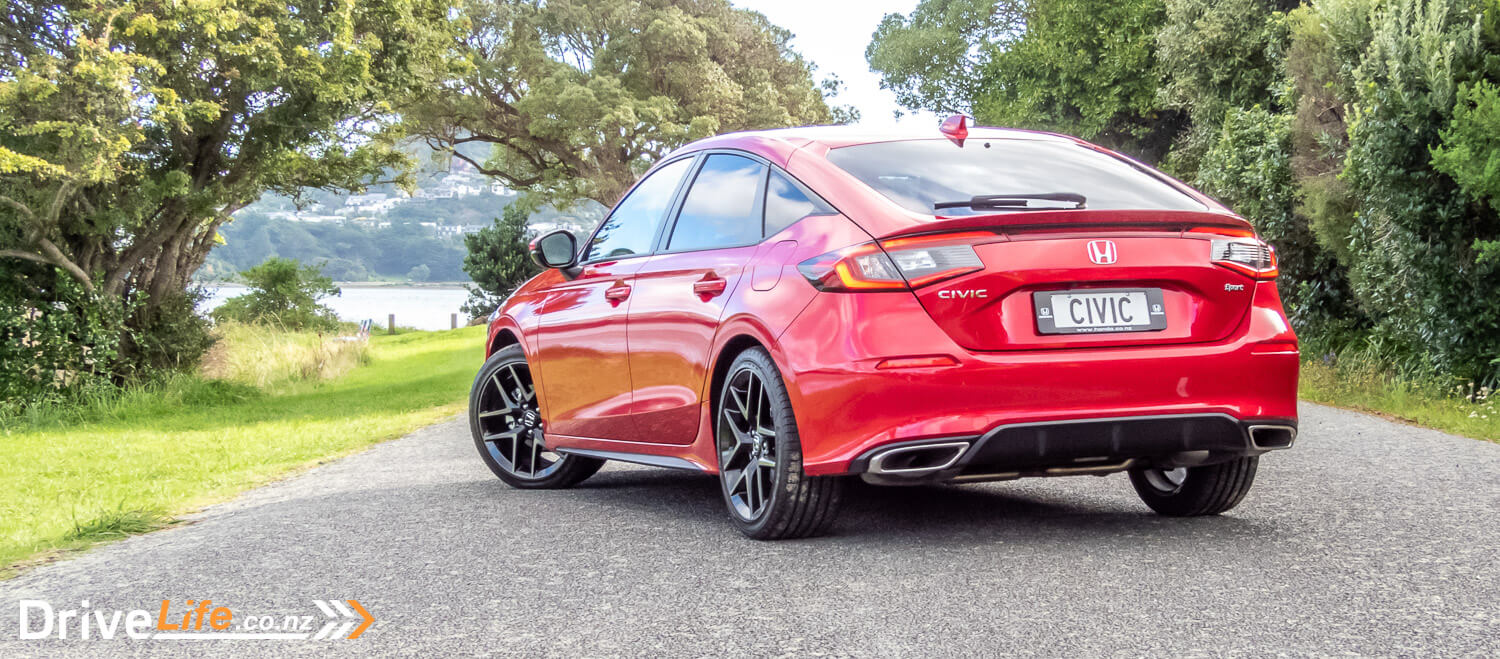
Of all environments, the Civic felt most at home on the motorway, where you could just enjoy the comfortable interior as you soaked up the miles. The motorway is also the optimal time to test out the Civic’s driver assistance systems, such as Adaptive Cruise Control and Lane Keep Assistance.
Putting it plainly, the Civic’s adaptive cruise control and lane-keep assistance systems are excellent. The Adaptive Cruise works down to a halt, while accelerating and braking are performed smoothly and gradually. Lane-keep assistance is often temperamental at the best of times, even in cars with many extra thousands on the price tag. The Civic, on the other hand, has the best lane-keep assistance I’ve used in any car under $50,000.
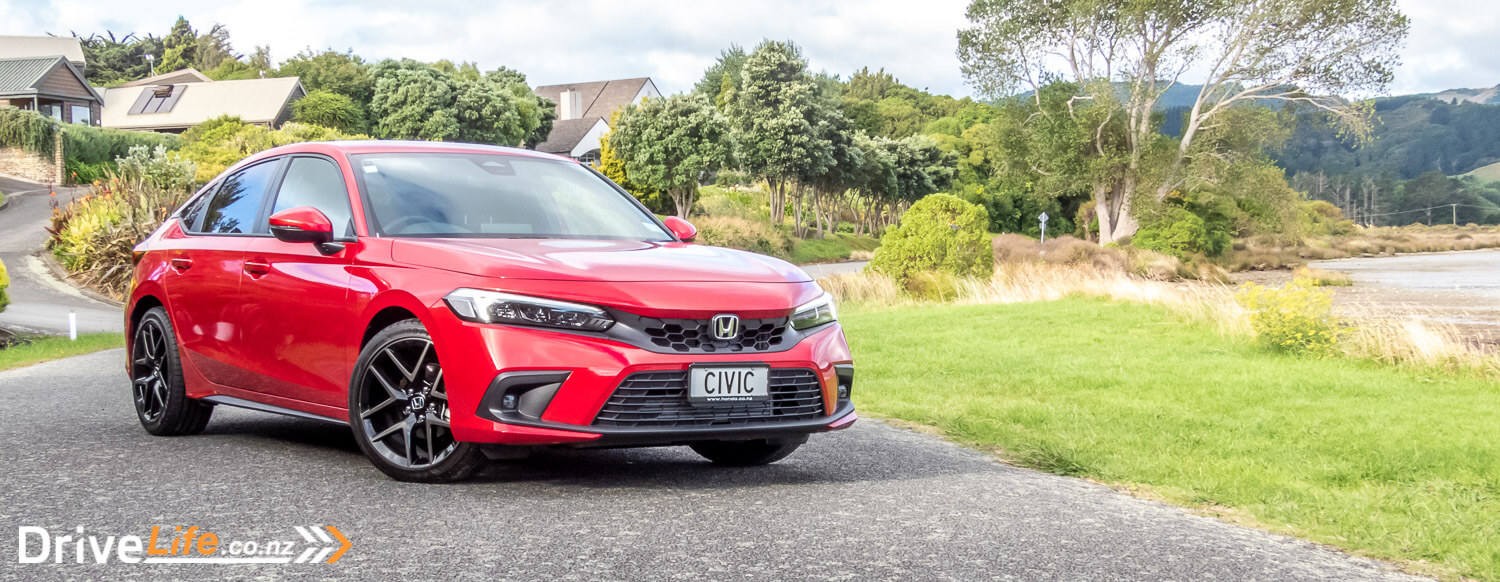
2022 Honda Civic Hatch Sport Specifications
| Vehicle Type | Hatchback |
| Starting Price | $47,000 |
| Price as Tested | $47,000 |
| Engine | 1.5-litre turbocharged 4-cylinder (L-15) |
| Power, Torque kW/Nm | 131/240 |
| Transmission | CVT Transmission |
| Spare Wheel | Pump only |
| Kerb Weight, Kg | 1,369 |
| Length x Width x Height mm | 4560 x 1802 x 1415 |
| Boot Space / Cargo Capacity,Litres (seats up/seats down) | 404 + 45 (seats up) 814 + 45 (seats down, load to window line) 1212 + 45 (seats down, load to roof) |
| Fuel tank capacity, Litres | 47 |
| Fuel Economy, L/100km | Advertised Spec – Combined – 6.3 Real-World Test – Combined – 7.5 Low Usage: 0-6 / Medium Usage 6-12 / High Usage 12+ |
| Towing Capacity Kg, unbraked/braked | n/a |
| Turning circle Metres | 11.6 Small: 6-10m / Medium 10-12m / Large 12m+ |
| Warranty | Up to 5 Year Warranty (3 year Manufacturer + 2 year Distributor), unlimited kilometres, fully transferable |
| Safety information | ANCAP Rating – 5 stars Rightcar.govt.nz – 5 Stars – CIVIC |
Have you enjoyed this review? Be sure to join our monthly email newsletter list so you don’t miss a single car review!


